SW London professional organiser, certified KonMari™ consultant and Local Mum Victoria Nicholson blogs for us on everything to do with home organisation
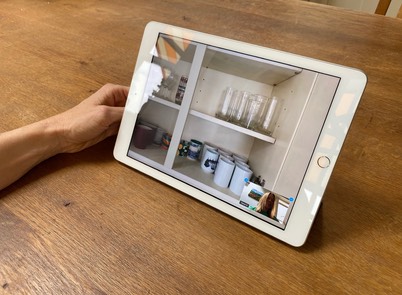
Advance preparation for the Summer holidays (always closer than we think!)

I know we’ve only just got through the Easter holidays but it’s surprising how quickly the Summer holidays can sneak up on you. For those lucky enough to be going away either in the UK or further afield I’ve got a few plan ahead organising tips so you don’t have to think of everything at the last minute (way too stressy!)
So, here’s a reminder of the things you can check off your list a few months before i.e. now
- Check those passports – super important now because of strike action and new Brexit rules. Check they are valid for at least 6 months (you can look up individual country requirements ) It’s also not a bad idea to keep a photo of the page with your passport number in case you lose it.
- Apply for GHIC/EHIC health cards – these are free and you should never have to pay for them
- Check rates with your mobile phone provider (and keep a separate copy of your phones IMEI number)
- Make sure you research your destination – if you’re on a package, what’s included? Researching the culture ,customs and history of your destination will make the holiday more enjoyable. Encourage the children to learn a few words in the local language (please, thank you, good morning)
- Write a packing list for each member of your family that can be checked off. Doing this early will alert you to the things that you need to buy (put these on a separate list). If you know what you need to get ahead of time you can often take advantage of lower prices (eg, discounts on sun cream ahead of the season) Saving the lists electronically will mean you have the basis for next year and will just need to tweak it.
- Take a look at your suitcases – are they still fit for purpose? Has your family grown since you last went away?
- Check travel insurance deals – is it included with your holiday? Does your credit card offer free insurance?
- Do you have any bills eg utility, credit card etc due while you’re away? Can you set up payment for those?
- Make a list of any services, deliveries you will need to cancel while you’re away
- Get out you holiday clothes well in advance and see what needs mending, replacing, washing etc. My son hates trying on new clothes but you don’t want to be stuck with a suitcase of wrong-sized clothes while you’re away!
- Invest in some packing cubes to keep clothes organised – seriously, a game changer. You could go one step further and choose a different colour for each family member.
Help booking holidays
Looking for a family-friendly travel agent? Travel Matters has been highy recommended by local mums.
Contact:
Victoria Nicholson
Founder
My Wardrobe Zen
Tel: 07941 375304
Email: victoria@mywardrobezen.co.uk
www.MyWardrobeZen.co.uk
Study Space

Those with teens taking exams this term will now be in the thick of it. Hopefully, they’ll have a designated study area whether that’s a corner of the kitchen table or a desk in their room or elsewhere. In a perfect world they will have been super-organised and sorted their space and study materials months ago but for those that haven’t (possibly most teens) it’s not too late. It's well worth carving out half an hour of study time to get everything in place; they will gain back study time in the long run after all time spent searching for missing notes is time wasted.
Begin by decluttering the study area.
Have your teenager go through all their study materials, textbooks, notes, and papers and put aside anything that won’t be needed in the next few weeks. These items can be stored in boxes away from the study area ready for a big sort through over the holidays. Once an exam has been taken then the relevant study materials can join these storage items.
Next make sure that everything has its designated place.
Utilize storage solutions such as bookshelves, file holders, and boxes to keep everything organised and in its proper place. A clear desk space can help to maintain focus.
Create a study-friendly environment. Allow natural light into the room plus a good reading light for evening study. Provide a comfortable chair and desk and add some plants to help reduce stress levels. They might want to add a favourite picture or ‘lucky’ item. Remove phones! (Good luck)
The most important thing is to make sure your teenager is involved in the process. They should have a say in how their study area is organised and should feel motivated to maintain a clutter-free and peaceful space for studying.
Local Mums Discounts
Don’t forget I offer Local Mums members three hours of virtual tidy sessions for the price of two. Check out our Local Mums Discount page for my and other great local discounts!
Contact:
Victoria Nicholson
Founder
My Wardrobe Zen
Tel: 07941 375304
Email: victoria@mywardrobezen.co.uk
www.MyWardrobeZen.co.uk
Jobs to do in Winter

I don’t know about you, but I always feel the need to hibernate around this time of year. At the same time I don’t feel the urge to undertake any big home projects but prefer smaller tasks that also make me feel good. I’ve listed some of the things I’ve enjoyed doing that are a perfect distraction from the cold weather and lack of sunshine.
Rearrange furniture – sometimes just placing a side table in a different position or moving a chair can give the room a completely different dynamic
Swap cushions – I like to swap cotton cushions for something with a bit more texture for winter
Plan new paint colours – while the light’s not ideal for painting, there’s nothing to stop you from planning colours and making a mood board
Make a reading nook – I have a corner of my living room with a chair, reading lamp and somewhere to put a mug of coffee (or glass of wine!)
Organise your wardrobe (declutter first) Try on different combinations and see if you can make some new outfits with the clothes you have
Get old family films digitised to enjoy on rainy days
Plan next year’s garden
Grow microgreens on your windowsill
Meal planning – will help you stick to your food budget.
Batch cook comforting stews and freeze
Bake your own bread (quick bread or sourdough) – even if it’s just for the aroma as it cooks!
Have a mending session for clothes
Make a vision board of how you’d like your home to look and feel
If you don’t already have one, get a planner/diary and put in all the key dates. They’re usually discounted now the year’s started.
Re-organise your laundry area and detergent storage – give your machine a clean while your at it
De-fuzz your sweaters
Polish boots and shoes
Local Mums Discounts
Don’t forget I offer Local Mums members three hours of virtual tidy sessions for the price of two. Check out our Local Mums Discount page for my and other great local discounts!
Contact:
Victoria Nicholson
Founder
My Wardrobe Zen
Tel: 07941 375304
Email: victoria@mywardrobezen.co.uk
www.MyWardrobeZen.co.uk
Passive organising

When someone gets in touch with me to help them organise their space, it’s not a spur of the moment decision they’ve made but more often than not something that they’ve been thinking about doing for quite some time.
People can spend months or even years in the ‘passive’ phase of their organising journey and it’s a very important piece of the puzzle. Most of this time is spent information gathering – from reading books, watching organising shows (plenty on offer now!), instagram feeds, podcasts etc. The problem is, there is so much information out there and so many different approaches that it can be overwhelming so once you’ve gathered your resources you need to figure out which approach would suit you best. This is the planning stage.
Questions to ask yourself at this planning stage could include:
What motivates you?
Why do you need to organise your space? For example, you may need to use the spare room for guests, you’re finding it hard to focus at a cluttered desk, you may want to invite friends over more often
When are you at your most productive?
Are you a morning or evening person, have you got planned holidays or time off work. What are your financial commitments. When would you be able to commit some time to the process.
How much money and time are you willing to invest?
At this stage, it’s also useful to visualise what you would like the outcome to be and how you would like your home to look and feel.
So, you’re probably thinking, that’s all very well but how to I move from the planning to the doing. How do I move from passive organising to active organising?
Once you’ve come up with a plan, the next step is to make the commitment. If you have time to watch a box-set then you have time to organise your home – it’s just a case of prioritising. So put dates and times in your calendar and tell friends and family of your intentions. Gather all the tools you need. Often sharing plans means that you’re more likely to go through with them.
I’ll let you into a secret – there’s never going to be a ‘perfect’ time to begin decluttering and organising. Life will always be busy but you can take control and decide when you’re going to make a start.
Local Mums Discounts
Don’t forget I offer Local Mums members three hours of virtual tidy sessions for the price of two. Check out our Local Mums Discount page for my and other great local discounts!
Contact:
Victoria Nicholson
Founder
My Wardrobe Zen
Tel: 07941 375304
Email: victoria@mywardrobezen.co.uk
www.MyWardrobeZen.co.uk
It’s a wrap!

There always seems such a big lead up to Christmas and then it’s all over in a couple of days! I hope you enjoyed your holidays, however you celebrated.
While twelfth night Is the traditional day to un-deck the halls, many start sooner. Whenever you start, here’s a few tips and reminders.
Tree – this is the largest item taking up the most space so it makes sense to tackle it first. If it’s real, check your local council collection days and put it outside in good time (usually in your front porch if you have one) If it’s a faux fir then make sure you have a bag large enough to store it away (both Amazon and B&Q have sturdy tree storage bags)
Tree decorations – check baubles for damage and discard any that are broken before storing the rest away. You can of course buy dedicated storage (the Really Useful Company does good ones) but you can just as easily use cardboard boxes and divide into sections with card. Egg cartons make great storage for small baubles. Grouping like with like or same colour groups together will make decorating easier next year. Don’t forget to label everything. Tree lights can be wrapped around the inside cardboard tube from wrapping paper or around a flat, notched piece of card to spare you from the ‘great untangling’ .
Christmas Linens and themed clothing – launder and store with the decorations (this includes Christmas PJ’s, jumpers etc). If you have any special Christmas crockery or mugs, these can be stored with the decorations.
Unwanted gifts – if you cant return for a refund, donate to your favourite charity. The gift was the thought and sentiment that came with the item so don’t feel bad about not keeping it.
Cash – if you were given cash, make sure you put it straight in the bank or in your wallet and keep gift vouchers all in one place.
Food – donate excess/hamper food to a food bank, neighbours, Olio if you’re not going to use them. This is a good time to give your fridge a clean out. Freeze any left over food and label well.
Christmas cracker – don’t always store well, so if you have any over, use them on New Years Eve/New Years Day
Cards – Once you’ve done with these you can recycle at branches of Sainsburys. If you prefer to keep them for gift tag making, just keep the front.
Wishing everyone a Joyful New Year!
Local Mums Discounts
Don’t forget I offer Local Mums members three hours of virtual tidy sessions for the price of two. Check out our Local Mums Discount page for my and other great local discounts!
Contact:
Victoria Nicholson
Founder
My Wardrobe Zen
Tel: 07941 375304
Email: victoria@mywardrobezen.co.uk
www.MyWardrobeZen.co.uk
Organising for Christmas to save money
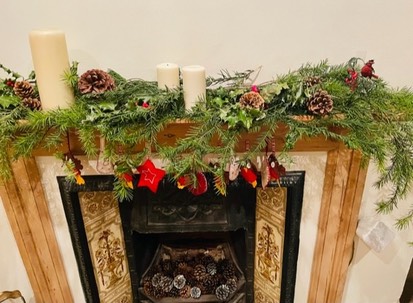
Christmas is a time of year when we can all feel the purse strings pull a bit but this year it seems they’re pulling even tighter. However, with a bit of organising and planning ahead you can have the Christmas you want (Ok, maybe not the Caribbean beach holiday) and not overspend.
Before you start, work out your Christmas budget. What, in real terms, can you afford to spend. Keeping this in mind will help reign in any impulse buys.
Here are a few money saving ideas I’ve used over the years – I’m sure you have some of your own too!
- Photo Calendars and framed photos make great gifts for relatives and many of the printing companies have great deals at this time of year so search around to find the best price (Photobox, Truprint and Snapfish for example, frequently have half price offers)
- Make your own promise vouchers as gifts e.g. babysitting, dog sitting, car cleaning
- At family get-togethers nominate each person to buy one gift for one person
- Talk about expectations for Christmas. Decide what’s really important and what is non-negotiable. Don’t forget, just because something’s always been done a certain way, it doesn’t mean it’s still right for you. Don’t be afraid to introduce new traditions.
- Gather your own decorations. If you’re lucky enough to live close to a wooded area hunt for holly and fir branches. Don’t forget to bring thorn proof gloves!
- Make your own decorations. There are plenty of YouTube tutorials ranging from paper chains and stars to baubles. It’s a great way to get the children involved.
- Plan food in advance make sure there’s enough room in the freezer and the fridge by one component per week and by Christmas you have everything you need. Frozen turkeys can be just as good as fresh, just remember they need a long thawing time.
- If you have a small family why not club together and share Christmas with another family.
- Wrap gifts in brown paper, you can always get the children to add their own personality with stamps or potato prints. Tie with string and slip a sprig of rosemary or a pine frond underneath. Scarves destined for the charity bin can also be used to wrap gifts.
- Make your own wreath or buy a basic supermarket one and add your own bits and pieces.
At the end of the day, it’s not worth bankrupting yourself over Christmas. The most important gift you can give those you love is spending time with them.
Local Mums Discounts
Don’t forget I offer Local Mums members three hours of virtual tidy sessions for the price of two. Check out our Local Mums Discount page for my and other great local discounts!
Contact:
Victoria Nicholson
Founder
My Wardrobe Zen
Tel: 07941 375304
Email: victoria@mywardrobezen.co.uk
www.MyWardrobeZen.co.uk
Nine of the most common organising mistakes
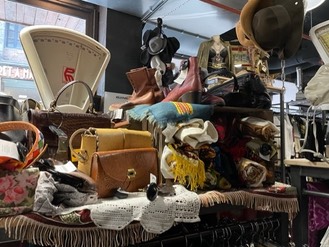
Believe it or not, I used to really struggle to keep organised so I’d like to share with you some of the biggest mistakes both myself and some of my clients have made.
1 Not committing – It’s important to get a date in the diary and prioritise your organising (remind yourself of the benefits). Recognise procrastination in its many inventive forms.
2 Failure to prepare – As they say ‘fail to prepare, prepare to fail.’ Before you begin visualise how you want your space to look, have bin bags at the ready and research three charity shops nearby that will be happy to take anything you let go of. Make sure there are no distractions in that dedicated time you’ve set aside.
3 Don’t buy storage boxes and bins before you start – They will only add to the clutter and you don’t know how many you’ll need or what your space will look like once you’ve completed your task.
4 Organising before decluttering – Always declutter first. It’s easier to organise with less!
5 Organising by room rather than by category – Not only can you see exactly what you have when you organise by category but it will ensure you don’t just move things to another room.
6 Not using the full height of a room – And don’t forget to use shelving rather than stacking boxes (how will you get to the contents of the lower boxes without causing an avalanche?)
7 Storing like items in random places – Instead keep like with like then it’s easier for you and other members of your household to find things when you need them (and put them away afterwards!)
8 Filling space to the brim – Always allow a little ‘wiggle’ room – leaving spaces 80% full. Think of how crushed your clothes get in a wardrobe stuffed to the gills.
9 Hiding away frequently used items – It makes sense to keep items you use a lot where they’re easily accessible and swapping items less frequently used (Christmas table ware, juicer?) to the harder to reach areas.
Local Mums Discounts
Don’t forget I offer Local Mums members three hours of virtual tidy sessions for the price of two. Check out our Local Mums Discount page for my and other great local discounts!
Contact:
Victoria Nicholson
Founder
My Wardrobe Zen
Tel: 07941 375304
Email: victoria@mywardrobezen.co.uk
www.MyWardrobeZen.co.uk
Local Mums Discounts
Don’t forget I offer Local Mums members three hours of virtual tidy sessions for the price of two. Check out our Local Mums Discount page for my and other great local discounts!
Contact:
Victoria Nicholson
Founder
My Wardrobe Zen
Tel: 07941 375304
Email: victoria@mywardrobezen.co.uk
www.MyWardrobeZen.co.uk
Myth Busting

As a professional organiser and Konmari™ consultant I come across people with interesting ideas about what a P.O. actually does and Marie Kondo’s KonMari™ method so I just wanted to bust a few myths!
A professional organiser will come into my home and make me throw half my stuff away
This myth has come about by some of the more extreme TV shows out there. The reality is that a P.O. will never make you let go of any item that you wish to keep. The KonMari™ method in particular is about surrounding yourself with joy by selecting all the items that support you in your ideal life. So, for instance, if you have a large collection of shoes and can honestly say each pair makes you feel good and is comfortable then keep them all, make sure they are accessible and enjoy them.
The KonMari™ method is all about minimalism
You can be a maximalist, a minimalist or like most people somewhere in between and still employ the KonMari™ method – as long as everything around you contributes to a joyful life.
All I need is some clear plastic boxes and a label maker and my kitchen/laundry will look amazing
Organising is the very last step in the process. By decluttering first you’ll be able to see exactly how much storage you need. Whatever storage solution you apply, it must work for you and your family. For example, there’s no point decanting dry foods into clear containers if you have nowhere to store the remaining packet contents.
I’ve seen lots of pictures on Instagram and the KonMari™ method is all about perfection
If you aim for perfection, you’ll never get started. it’s about creating workable, realistic systems for your home.
The KonMari™ method says that you should thank your items before you discard them – that sounds weird
This one is true. Gratitude is at the very heart of the KonMari™ method – being thankful for the items that have supported you in your life can help you to let go of them. You don’t need to thank them out loud – just in your thoughts– try it!
A Professional Organiser will be shocked by the state of my home
All P.O.s just want to help and will never judge anyone. Life can get busy and it’s so easy for our homes to take a back seat. P.O.s will never judge and just want to help.
I’m naturally messy – no method can help me!
Would you be surprised if I told you that many P.O.’s are naturally messy (myself included)? Being tidy is a skill like any other that can be learned.
Local Mums Discounts
Don’t forget I offer Local Mums members three hours of virtual tidy sessions for the price of two. Check out our Local Mums Discount page for my and other great local discounts!
Contact:
Victoria Nicholson
Founder
My Wardrobe Zen
Tel: 07941 375304
Email: victoria@mywardrobezen.co.uk
www.MyWardrobeZen.co.uk
Operation Unicorn
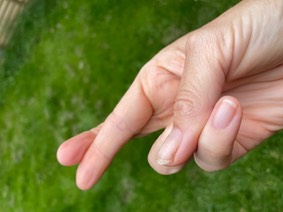
Recent events have made me revisit my own ‘operation unicorn’, that is, what would need to happen should anything happen to me or my partner but more immediately, would we be able to access vital information should we need it. To that end, I’ve compiled a list (by no means exhaustive) and everyone’s list will be a little bit different and need tweaking from time to time. Here’s a basic one to start with;
PASSWORDS - and how to access them (it’s best to use a single system to store passwords so they’re all in one place and updated regularly)
Computer/phone/ipad
Social media and email
Bank accounts (including savings, current, money market, credit/debit cards)
Investments (ISA, stocks & shares, bonds etc)
Other online accounts (inc supermarkets, Amazon, PayPal, Ebay )
NHS/doctors
IMPORTANT DOCUMENTS – some of these may be stored electronically but for hard copies, if possible, it’s good to store these in a fireproof filing cabinet.
Insurance policy (house, life, car, medical)
Birth, pre-nup, marriage, divorce, death certificates
Medical records (including details of current GP and medications)
Tax returns (these may be kept electronically)
Vehicle documents
Pension plans
Travel documents
Benefit details and National Insurance numbers
Mortgage/loan agreements
Property deeds
Location of safe keys
CONTACTS
Solicitor (where will is held)
Accountant
Energy and other unility service providers
Landlord/agent
Repair services eg, plumber, heating engineer
Internet provider
It is also useful to have a ‘household file’ – that is, a go-to file where you can access all the information about your home. This would typically include information about appliances installed, service providers, room by room décor (ie. Paint colours, flooring), location of stop cock, meters, fuse board etc).
The key to making this work is that your trusted person knows exactly where and how to access both physical and digital documents
Local Mums Discounts
Don’t forget I offer Local Mums members three hours of virtual tidy sessions for the price of two. Check out our Local Mums Discount page for my and other great local discounts!
Contact:
Victoria Nicholson
Founder
My Wardrobe Zen
Tel: 07941 375304
Email: victoria@mywardrobezen.co.uk
www.MyWardrobeZen.co.uk
New School Year

While I used to love the long summers of my childhood, the start of a new school year with the promise of different teachers, perhaps one or two new classmates and box fresh stationary was enough to make me look forward to the start of term. Nowadays, I look forward to the return to routine. I’ve found that the best way to ease into the new term smoothly is to have everything organised well in advance of D-day. I also have a check-list as I just know with everything going on I’m sure to forget something!
Uniform - first revisit the school website as there may be changes (for example, a different tie if moving to a more senior year). Next make sure existing uniform is tried on – you will probably be met with resistance to this but persevere – Children grow a lot over the Summer. Make sure everything is replaced, cleaned, mended, labelled. If your school has a second-hand uniform sale, put it in your diary. If you don’t like sewing and are short of time then use an indelible pen or stick on labels where you can e.g: Stick in Clothing Name Labels | Waterproof, Washing Machine Safe – Labels4School UK Don’t forget to label bags, stationery, drinks bottles and lunch boxes too. It helps to move school uniform to prominent area of the wardrobe that your children can access easily and see if you have space somewhere to lay out uniform the night before (wall hooks at child height can be good for this).
School bags – make sure these have been emptied out and re-filled only with items needed for the new school year. Group together like items and store in clear wallets (eg, bus pass, lunch pass, locker key)
Dedicated space to put bags, coats, shoes when they come in – if you’re lucky enough to have space in your hallway, this would be the ideal spot – otherwise, anywhere that you can keep everything together in one place. It saves sooo much time in the morning. Make sure any bag/coat hooks are reachable for your little ones.
Space for homework – perhaps your child is older now and needs a desk in their room? If space is an issue and homework takes place on the kitchen table then a magazine or box file with all the bits and pieces needed to do homework can become a portable work station. If you have an older child, then you might want to organise their book shelves into subject category using magazine files.
Lunches – if your children take a packed lunch to school, now is the time to plan in advance with a weekly menu plan and shopping list. For older children make separate containers in fridge with various components eg, cheese portions, vegetable sticks etc. so they can assemble themselves. Did you know that if you make sandwiches from frozen bread the night before they’ll be perfect the next day?
Command centre –this is especially useful for larger families. Basically, it’s an area which will help you organise the day to day smooth running of your home. It could include a white board, mail drop, action basket (for those school permission forms), key holder, pin board, calendar, meal plan. If you’re not sure where to start, a quick internet search will give you plenty of inspiration. A kitchen wall or the inside of a cupboard door are ideal for this.
Electronic diary - set one up that has family sharing capabilities so you don’t end up double booking. I like Cozi (the free version is more than adequate)
Stationery – don’t leave it until the last minute
Zip cards – make sure these are up to date
I find it helps to run through a typical school day in your head to help think about what might be needed.
Local Mums Discounts
Don’t forget I offer Local Mums members three hours of virtual tidy sessions for the price of two. Check out our Local Mums Discount page for my and other great local discounts!
Contact:
Victoria Nicholson
Founder
My Wardrobe Zen
Tel: 07941 375304
Email: victoria@mywardrobezen.co.uk
www.MyWardrobeZen.co.uk
Things not to bring home from your holiday
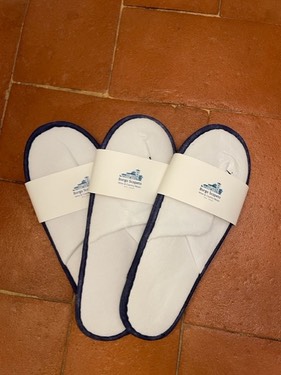
Whether you’ve been lucky enough to go away on holiday this year abroad or in the U.K. or are planning a break you might spend some time considering what to take with you but have you ever thought about what you might bring back? I’m not talking about considered items that will add value to your life but all those bits and bobs that will add to the clutter.
I’ve drawn up a little list - many of the items I’ve been guilty of collecting in the past!
Hotel slippers - are you really going to ever use these? They’re often 2 sizes too big and a trip hazard. You might have an idea to offer them to house guests but will they really want to wear them?
Toiletries - yes, those dinky bottles look cute but apart from encouraging the use of single use plastic they’ll just end up cluttering a corner of your bathroom while you use the products you prefer.
Hotel room clutter – you know what I mean - Tea bags, biscuits, pens, note pads etc.
Promotional items - eg activity bags for kids – these are sometimes handed out on planes or train stations. They can be really useful to keep boredom at bay during a long journey but they don’t need to come home.
Shoe cleaning and sewing kits - again, you won’t use them. They’re intention is to be used if you have a wardrobe misfunction while you’re away.
Brochures /tickets from places visited – this is ‘aspirational’ clutter as it’s unlikely you will curate a scrapbook of holiday memorabilia.
Souvenirs – don’t waste money on items that will never be used. Instead, before you go away have a good think about any items around the home or items of clothing that need replacing and write a list.
If you see something you like (eg a nice pair of wooden salad servers or a Summer dress) check your list first and make sure it’s something you actually need.
Bottles of liqueurs – they never taste the same as they did at the beach bar and will only end up in the school tombola…
So what are examples of good things to bring back?
Photos – but do take a few moments each evening to curate the photos you’ve taken during the day and pick the best.
Consumables – as long as they are food items that you will actually consume and can’t buy at home.
Memories.
Local Mums Discounts
Don’t forget I offer Local Mums members three hours of virtual tidy sessions for the price of two. Check out our Local Mums Discount page for my and other great local discounts!
Contact:
Victoria Nicholson
Founder
My Wardrobe Zen
Tel: 07941 375304
Email: victoria@mywardrobezen.co.uk
www.MyWardrobeZen.co.uk
Clutter = postponed decisions

If your home is feeling a little cluttered, take a closer look and see if you recognise any of these:
Mail waiting to be opened
Materials waiting to be ‘recycled’
Items waiting to be fixed (you don’t yet have the right tool)
Clothes waiting to be mended or cleaned
EBay items waiting to be sold
Items waiting to go to the charity shop
Pictures waiting to be hung or framed
Most people will have one or two of these tasks that keep getting put off (including yours truly!) but when you have several it's easy to feel overwhelmed and not know which one to start with first at which point not starting at all seems the best option.
Something every item on this list has in common is that each task will take time and there are only so many hours in the day so we prioritise what we deem to be important. What we may not realise is that an uncluttered space can actually buy us back time, for instance, time wasted spent searching for items.
So - how do you get started? My advice would be to tackle the smallest job first to give yourself that amazing feeling of achievement which will motivate you to do more. Are there any tasks you can delegate? Are you making more work for yourself - for example, if you have a box of items waiting to be listed on ebay could you give them to a re-seller to list for you or give them to your favourite charity? The space in your home could be more valuable to you than the value of the goods.
While you’re working through these uncompleted jobs it’s worth thinking about how you could prevent the build up of clutter in the future. What systems or rules can you put in place? It could be something as simple as having a bin by the letter box so that you can open mail as soon as it arrives and drop it it the bin if it’s not something you need to deal with.
Which one job will you decision will you make today and what action will you take?
Local Mums Discounts
Don’t forget I offer Local Mums members three hours of virtual tidy sessions for the price of two. Check out our Local Mums Discount page for my and other great local discounts!
Contact:
Victoria Nicholson
Founder
My Wardrobe Zen
Tel: 07941 375304
Email: victoria@mywardrobezen.co.uk
www.MyWardrobeZen.co.uk
Hangers
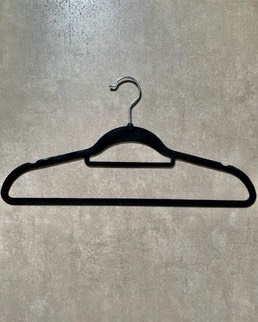
Whenever I’m doing a wardrobe declutter for clients they’re often unsure about what to hang and what to fold (and quite often it’s neither hung nor folded, but that’s a whole other blog!) The main objective of any clothes storage is that is:
- visible (so you can see what you have at a glance)
- accessible (you can grab something quickly without everything else falling down)
- protected (from moths, damp and dust)
So, hang or fold?
First, you need to assess your storage – how much hanging space do you have (including the wardrobe in the spare room), how much drawer or shelf space do you have?
What type of clothes do you wear most often? What do you have more of?
I’m a great fan of Marie kondo’s folding method and vertical fold as much as I can as it’s then easy for me to see what I have – it was a game changer and I find investing time to fold (I’m actually quite quick at it now) saves so much time later. However, you may not have the time or inclination to fold everything in which case you may want to hang more items.
What should I hang?
There are some clothes that will always need hanging space like heavy coats and jackets along with longer length dresses (if you have a shorter wardrobe, you can drape a longer dress through a second hanger) If you have the space, then I would also hang anything delicate or that would crease easily. Jeans can be folded along with trousers in heavy drill cotton. Jumpers are best folded as the weight will drag them down and cause them to misshape.
Which kind of hangers should I use?
Some of this may sound obvious, but the heavier the garment the more robust a hanger should be for example, a heavy wool coat would be best suited to a wooden hanger. Skirts and trousers prefer hangers with clips (a little tissue paper under the clips will prevent creases) while slim, flocked hangers are good for shirts and dresses.
I’m not a huge fan of multi-trouser hangers or the drop-down space saving kind as these can make it difficult to see what you have and retrieval can be awkward.
Aesthetic
If you want your wardrobe to make you smile each time you open it, then having all the same type and colour of hangers is key. It will instantly look more organised! Of course, you may need a few heavier hangers for suits and coats but for everything else I would recommend a slim, flocked hanger (these now come in a variety of colour options) Not only do they save wardrobe space but the velvety flock stops more filmy shirts and dresses from sliding off. If you have a bigger budget you might prefer the look of rubber coated wire hangers. Don’t forget to do up buttons and zips when hanging and if the garment has a matching same-fabric belt, keep it together looped through the hanger.
Where to buy
Many places now stock the flocked kind (Robert Dyas, John Lewis, Wilko, Amazon for different colours)
https://thehangerstore.co.uk/ and https://www.hangerworld.com/ both stock a good range
Some ideas for where to recycle old hangers
Charity shops will sometimes take them (but ask before you bring them in)
Dry cleaners will take the metal ones
Some larger Tesco stores
Freecycle
Olio
One last word – never EVER use the wire hangers you get with the dry cleaning – they have two uses – as a base for a Christmas wreath or to unblock the u-bend of your loo!
Local Mums Discounts
Don’t forget I offer Local Mums members three hours of virtual tidy sessions for the price of two. Check out our Local Mums Discount page for my and other great local discounts!
Contact:
Victoria Nicholson
Founder
My Wardrobe Zen
Tel: 07941 375304
Email: victoria@mywardrobezen.co.uk
www.MyWardrobeZen.co.uk
Lego
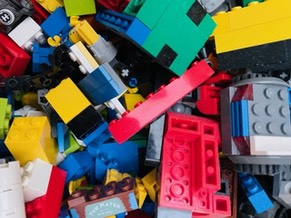
In the pain stakes, I think you’ll agree that treading on a lego brick in bare feet has to be up there in the top ten. I can’t guarantee that having Lego organised will prevent this agony but it will certainly minimise the risk.
I’m going to talk about the organisation of children’s Lego – adult collections need to be treated differently but if there are any adult enthusiasts amongst you, I expect you already have very good brick sorting systems in place!
So, before you begin think about how your children play with Lego. Do they have a mish mash of different bricks that they like to be imaginative with, do they build from sets or a bit of both? If they use sets, do they like to keep the finished item intact or do they like to pull it apart and either build something new or keep the pieces of the set together so they can rebuild the model in the same way another time?
Before starting any organising task, it’s important to first see what you have. So, gather every bit of Lego in the house (you’d be surprised where it can end up!). Any broken bits can be discarded and any grubby bits can go in the dishwasher.
The next thing to consider is the size of the collection. Small to medium collections are usually best stored in one large tub that you child can access easily, this encourages creative play. You can buy dedicated Lego storage tubs but anything without sharp edges will do. A lid will help keep the dust out. You can also buy fabric storage bags/playmats which are useful if you need to transport the pieces to another room/friend’s house.
Medium to large collections are best separated out. Some people like to sort by colour – very satisfying and looks nice but can then be difficult to find the individual pieces you need. The more logical way is to sort by size or type and, with younger children I would just keep the system as simple as possible so it is easy to maintain. So, for example you could divide into
- Mini figures
- Plates
- Tiles
- Bricks
- Other (eg, wheels, technical parts)
For storage, you can opt for containers (with lids), stacking systems or drawers but make sure they’re clear so you can immediately see what’s in there and label the containers (using words or pictures). You can spend a lot of money on dedicated Lego storage but you don’t have to – there are lots of good options out there Wilko, Rymans, Ikea, Pound shop all sell clear tubs. If you do go for clear drawers, try them out first for ease of opening/closing. You may even have something at home you can re-purpose.
Lego sets
Are these played with once they’re made? In which case, they’ll need to be displayed
on a low, accessible shelf or surface.
If not, then install a high shelf for display – or if you’re super handy
you could make some box frames
If the sets are pulled apart but you want to keep the sets together, then store each set in a large zip-lock bag with it’s manual. These can then all be stored together in a lid-less tub.
Many charities will be very grateful for your Lego (unfortunately Lego’s own scheme (Lego reply) isn’t yet available in the UK) but if you would like to make some cash, here are a couple of options:
Sell lego by weight at Sell Lego by weight for cash | Lego recycling | musicMagpie or Sell Stuff Online | Sell Books, Games, Tech & More | Zapper
Sell lego sets at Sell Lego Online - WeBuyGames.co.uk
Photographs

Asked what people would grab if they had to leave their home in a hurry, photos come pretty high up on most people’s lists. These captured moments in time evoke so many memories and sentiments. Given how important these windows on the past are to us, it’s surprising how badly most of us store and maintain our photos.
Most people will have a mixture of both paper and digital photos in their homes – perhaps mostly inherited from parents. It’s a huge topic so I’m going to concentrate on physical photos. Here are some tips for sorting and storing printed photos to get you started. It’s no surprise that photos are the second to last category to organise in the KonMari method. This is because it can be a difficult category to deal with practicing first with other less emotional categories is a good idea!
1 – Find a space somewhere that you won’t need to clear in a hurry and gather all your photos together – this includes those in albums and boxes. You can now see exactly how much you have and what you are dealing with. You’ll also need a large clean, flat area (either table or clean floor space) to do your sorting.
2 – Unless you have a small amount, you will need to divide the photos into manageable categories as sorting through photos does take time (don’t underestimate this bit!) Decide if you want to store your photos by year, event or person.
3 – Now take each box or album in turn and remove pictures that no longer serve a purpose or tells a story. Examples of these should be photos that
- Are duplicates
- Random scenery
- People who you can’t identify
- Blurred, faded photos that can’t be restored
- Photos with fingers showing in the corner (I had a few of these!)
- Blurred photos
- Photos that hold painful memories
- negatives
Enjoy the process but try not to dwell too long on each photo. You can now discard these with gratitude.
4- Once you know what you’re keeping, they can be sorted for storage. The easiest way is by year but you may want to sort by event or family member. Depending on how you want to access these photos later, they can either be stored vertically in archive boxes with dividers or if you’re more likely to want to flick through them, albums. I haven’t gone into too much detail about equipment or storage but you can find some great resources on Storage for photos, negatives and slides. - Preservation Equipment Ltd
Photos will degrade in time so it can be useful to scan any very special photos and store them digitally as a back up.
I haven’t talked about digital photos at all here as that would be a whole other blog (or three) but I’ll leave you with one quick tip – every evening take just 5 minutes to scroll through any photos you’ve taken that day and delete all those duplicates – keep only the best.
Spare room
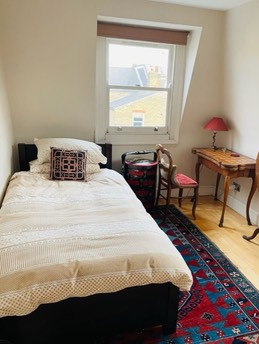
As a KonMari consultant I’m a big advocate of Marie Kondo’s KonMari method which involves going through the home category by category in order so that your clutter isn’t just shifted from one room to another, but there are times when you just want a room cleared quickly whether it be for office space during the pandemic or to offer a refugee. For those lucky enough to have a spare room in their home and need to clear it quickly - here’s my guide to getting started.
1- Plan ahead - take a good look at your timetable and work out when you can fit it in to your schedule, try and find a time when you won’t be too tired. It’s best to block out half an hour for a few days than try and do everything at once and get fatigued. Put in in your calendar and ring fence it.
Plan your exit strategy for the items you are letting go - do some research and find out what your local charity will take (and the opening hours), arrange council collection for large furniture items or if you’re selling items which platform you’ll use etc.
2- Get your equipment ready - you’ll need some sturdy cardboard boxes, a sharpie, post it notes (or labels/masking tape) and some bin bags.
3 - You’re all set to declutter - label three large boxes or bins ‘keep’ (items that belong in another area of the house), ‘sell’ and ‘charity’. Have your bin bag/recycling bags ready for anything that will go directly in there
4 - Start with the largest items first - this would include furniture, large electrics etc. and remove anything you’re not keeping from the room - this will free up some floor space for you to work. Are there any obvious wins that can go straight in the bin or recycling? This might include things like broken items that you won’t get round to fixing, old cables and defunct tech etc, magazines. Don’t forget, most items can be replaced (or borrowed) if you really had to.
5 - Now go through systematically and look at each item and decide if it still serves a purpose - if not, put into the correct bin. As you’re sorting through, put items you’re keeping in general categories (clothes, books, toys etc.)
6 - At this stage, don’t bother sorting through the smaller items (eg, photos, birthday cards, children’s art work) but keep it all together to sort out later. The purpose is to get the room cleared quickly. Looking at smaller items will distract you. Be single minded!
7 - Once cleared, make sure you get your declutterings off the premises asap.
8 - Now’s a good chance to give the room a proper clean…
If you are seriously considering hosting a refugee in your spare room I’m offering FREE advice sessions on Zoom to get you started (or in your home for those in SW15) I’m part of a group of organisers volunteering this service in light of the current refugee crisis. You can either contact me directly or find more information on www.spareroomsorted.uk
Fridge storage

Half -term is over so now’s the perfect opportunity to clear out your fridge – the freezer can be left for another day as this will take some time and focus.
The fridge is an area that can become a bit of a mess very quickly – especially if you have different members of the household dipping in and out of it. Keeping an organised fridge will not only save you time (looking for things) and money (knowing what’s already in there before you go shopping) but it will also minimise your risks of potential food poisoning.
The best time for a clear out is before you do your weekly shop but don’t wait till then if you feel the urge!
So how to start? Make sure you set aside enough time to empty the fridge completely and give the interior a good wash with a mixture of bicarbonate of soda and water (any commercial cleaners will affect the taste of the food). You could also place a small bowl or eggcup of bicarbonate of soda inside the fridge to absorb any strong odours.
Now it’s clean, don’t put anything back that doesn’t need to be in there, is out of date, or you don’t know what it is.
Some rules:
Don’t overfill – freezers love to be tightly packed for greater efficiency, but fridges prefer air to circulate.
Don’t store milk inside the door – this is the warmest part of the fridge, and it will go off quicker
Make sure you’re not storing things in the fridge that don’t need to be – tomatoes for instance lose their flavour in a fridge, raw potatoes can become toxic, and bread will go hard. Things like tomato sauce and peanut butter can happily live outside the fridge.
Check your leftovers – will you really be using them in the next few days? If not, freeze them. Try not to over-cater, this will help reduce food waste.
Store leftovers in clear container – this way you’re more likely to use them up.
Those beautiful fridge pictures on Instagram can look amazing with veggies and fruit chopped up and stacked in clear containers. While clear containers are great for seeing what you have (and ideal for leftovers) you will lose vitamins rapidly if you pre-cut fruit and veg.
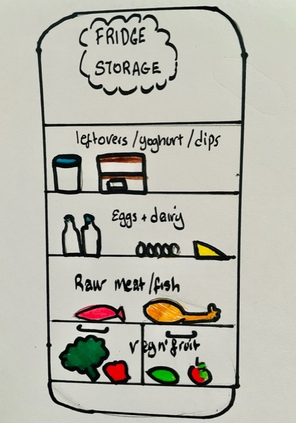
My son kindly helped me with this illustration!
Storage
The idea is to store food items so that they’re easy to see, easy to access and in the correct part of the fridge to keep them at their best (and avoid food poisoning). Everyone’s fridge will have a different number of shelves, but the rules are the same.
Bottom drawers – these are for your fruit and veg
Bottom shelf – any raw meat, poultry or fish should be stored here – it’s the coldest part of the fridge and any random meat juices won’t spill down and contaminate food below
Middle/Lower shelves – eggs, hard cheese, milk all live here
Top shelves – great for any leftovers , things like hummus, ham, petit filous etc. (basically food that doesn’t need cooking)
If you have a large fridge you may have a few more shelves but same rules apply
Inside of door – perfect for bottles of water, sauces, and condiments, butter, juice, soft cheese
If you have lots of bottles of open sauces etc. clear plastic fridge drawers with handles (Wilko, B&M, Lakeland) can help to keep them all together in one place as these items have a habit of migrating!
Similarly, small yoghurt pots, cheese etc can all be kept together in one pull out container where everyone can reach them. Keeping like with like makes items both easier to find and easier to put away.
Local Mums Discounts
Don’t forget I offer Local Mums members three hours of virtual tidy sessions for the price of two. Check out our Local Mums Discount page for my and other great local discounts!
Contact:
Victoria Nicholson
Founder
My Wardrobe Zen
Tel: 07941 375304
Email: victoria@mywardrobezen.co.uk
www.MyWardrobeZen.co.uk
Why we hang on to stuff
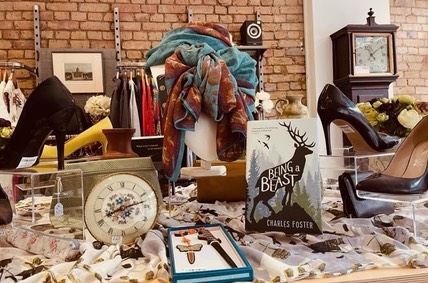
The reason we hold on to things...
Decluttering is never just about the stuff. It can be easy declutter but unless you figure out why you’re keeping it – guess what? Before you know it that uncluttered area will become cluttered again.
There are two main reasons why most people hold on to stuff
- Nostalgia of the past – we all want to hold on to precious memories, the good ones at least and sometimes holding an object in our hand or having sight of it can help to trigger those memories. If we didn’t have those items would we truly forget those special times? Is there another way of keeping the memories – for example, in a notebook or by photographing items? Sometimes we do need to have the physical item but most often we don’t. Bear in mind that clinging on to the past can prevent us from moving forward and making new memories.
- Fear of the future - what could happen if you let go of an object? What impact will it have on your future? The truth is, nothing bad will happen and most items could be replaced at some point. Yes, you might need something in the future but chances are you may want to get a new version of the item when you need it (for example, paper plates left over from the last party – next year they will want a different theme, jeans to fit back into). Some items get hauled out once a year (ice cream maker anyone?). These items can be borrowed either from friends or somewhere like ‘the library of things’ in Morden. Holding on to something because you might need it ‘some day’ is seldom a valid reason to keep it.
There are also, more practical stumbling blocks people come across when trying to let go of items, common ones include:
Not knowing what to do with it – this is why it’s always a good idea to do some advance research of your local charities and think about where you may want to donate items, and how – do you have a car? Will they collect? If you’re planning to sell items have a date by which they must be sold and donate to charity if they haven’t sold by this date. Some re-sell sites, like RE-Thread offer the option to donate your clothes to charity should they not sell after a fixed time. It’s easy to get fixated about finding the perfect place to donate items but keeping them in a bag at home means they don’t get used at all.
Needing permission – are you keeping items out of guilt? Perhaps a well meant gift from a friend that you never really liked or no longer fits a purpose or a family item ‘passed down’ that needs to be kept ‘in the family’ (we’re not living in Downton Abbey). Great Grandma will not be looking down and sucking her teeth when you pass on the tea service.
Sentimental – I’m not advocating ditching all sentimental items – but make a choice. It’s not necessary to keep every single thing. In fact, by having fewer items they become more precious. Some of my clients choose to keep a memory box – this means that you have to keep to a certain volume of storage. It can really help you focus on which items are truly important and have real meaning.
Please note that for individuals with a hoarding disorder, there will be other reasons why it is difficult to let go of items and the best place to start is to get in touch with Hoarding UK | Promoting Choice & Control since 2008 a charity solely focused on supporting people impacted by hoarding behaviour.
Local Mums Discounts
Don’t forget I offer Local Mums members three hours of virtual tidy sessions for the price of two. Check out our Local Mums Discount page for my and other great local discounts!
Contact:
Victoria Nicholson
Founder
My Wardrobe Zen
Tel: 07941 375304
Email: victoria@mywardrobezen.co.uk
www.MyWardrobeZen.co.uk
New year - you as you are
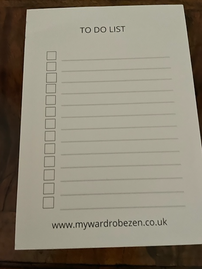
So we’re now a good few weeks into the New Year – rather than the whole ‘New Year, New You’ thing, have you thought about celebrating the best of the current you? January can be a bit of a quiet month, so it’s a great time to re-assess your vision (which I talked about in blog February 2021) and see if that has changed.
Are some of the changes you made around the home not quite working? What would make them better?
Your home and your possessions are there to support you so now is the time to take an audit and see if there is anything that isn’t supporting your current lifestyle who you are today.
Now think how you want to use each areas of the home – are you working from home more and need a better space for your desk? Has your family grown – perhaps some rooms need swapping round? Is your kitchen and laundry area set up for ease of use? These are just some examples.
I would suggest using Marie Kondo’s categories as a guide and work through them systematically – if you’ve already done a deep de-clutter last year then think of it as maintaining a well planted garden.
You don’t need to do anything just yet – just have a walk around each room (with a notebook, or record to your phone) and make a note of what needs doing to make the room how you would like it. The object of the exercise is simply to assess your current situation so you can identify areas that require change (or just a tweak) and draw up a plan of action for the months ahead.
Some things to think about
Clothes – do your clothes still fit? Do they suit your lifestyle – perhaps you’re working from home and don’t need so many ‘office’ clothes, or perhaps you no longer need maternity wear? Take an inventory and check for anything that needs to be repaired, is too worn to repair or doesn’t make you feel great when you wear it.
Books – these can easily gather dust, so it’s a good time to take them of the shelves and give them a good wipe down. Are there any books that the children have grown out of? Any paperback that will never be read again? Novelty Christmas books whose novelty has worn off? Use an app like Ziffit to make a few £££’s while you’re at it
Papers – Paperwork can very quickly get out of order – if your paper mountain is getting out of hand, reassess your systems
Kimono – this is everything that doesn’t fit into the other categories so things like toiletries, kitchen items, children’s toys etc. Take a look around and see if there are any areas where your current storage isn’t working.
Sentimental – Cold, dark evenings can present a good opportunity to go through all those digital photos you’ve amassed in the past year and delete all the duplicates.
Local Mums Discounts
Don’t forget I offer Local Mums members three hours of virtual tidy sessions for the price of two. Check out our Local Mums Discount page for my and other great local discounts!
Contact:
Victoria Nicholson
Founder
My Wardrobe Zen
Tel: 07941 375304
Email: victoria@mywardrobezen.co.uk
www.MyWardrobeZen.co.uk
10 decluttering resolutions

Did you know that
‘decluttering’ is near the top of many people’s New Year resolutions? I’m not one for big new year resolutions that
start with good intentions then fall flat a couple of weeks in. I am,
however, a fan of small habit changes that will make big differences – here are
some suggestions and ones that I will be adopting myself:
- I will keep flat surfaces clear – this includes the countertop next to the dishwasher
- I will return items straight away to their correct home after use
- I will not leave clothes or socks on the floor but put them directly into the laundry bin (this one is actually for the male members of my household!)
- I will take decluttered items out of the house as soon as humanly possible to the charity shop
- I will be mindful about new items I bring into the home
- I will unsubscribe to emails that no longer serve a purpose
- I will write expiry dates on all my toiletries once they’re opened (there’s a little pot symbol on the label that will usually say if it’s 6 or 12 months)
- Ditto spices
- I will use all my good stuff and not save it for a special event (this applies to scent, crockery, clothes etc)
- I
will review and delete photos from my phone on a regular basis
How about starting with just one, and see how it goes...
Happy New Year!
Local Mums Discounts
Don’t forget I offer Local Mums members three hours of virtual tidy sessions for the price of two. Check out our Local Mums Discount page for my and other great local discounts!
Contact:
Victoria Nicholson
Founder
My Wardrobe Zen
Tel: 07941 375304
Email: victoria@mywardrobezen.co.uk
www.MyWardrobeZen.co.uk
Unclutter your Christmas

It’s so easy to get swept up into a festive frenzy and end up completely stressed out before Christmas even arrives. There always seems so much to do – gifts, decorations, cards, food, school fairs...but the question is, how much of it is really necessary? Could you, maybe, get away with doing a little less? Just because you have always done things a certain way, it doesn’t mean you can’t change and make new traditions and concentrate on the things that are the most important to you.
So, how to unclutter your Christmas? Let’s have a look at the different areas we want to declutter.
Physical - it’s always a good idea to have a clear out well in advance of the big day. This means not only will you will be well prepared for guests, it will be easier to put up Christmas decorations. Encouraging your little ones to offload some toys they no longer play with to the charity bin (for other children to enjoy) will make space for anything Santa might bring this year.
While you’re clearing out, you might want to have a look at your Christmas decorations and see if they are still fit for purpose. Do your tree lights still work, are crackers, gift wrap and gift bags you’ve saved from last year still fit for purpose? Did some baubles not survive last years’ packing? Don’t forget to unclutter your fridge and freezer before you need to put in any Christmassy food – block off a couple of hours and empty it out completely. Bin anything you can’t identify, is past it’s ‘use by’ or won’t be eaten and don’t forget to give it a good clean before putting food back. Satisfying!
Calendar – diaries can get super busy this time of year and I know many of us feel like we have to make up for last years lost time but it really is OK to say ‘no’ to things. Go through your calendar and highlight what is essential and those things you really want to do. Declutter (or delegate) the rest.
Mental – reframe you Christmas. Don’t try and emulate those warm and fuzzy Christmas ads – it’s your celebration so tailor it to your needs. You don’t need matching pyjamas, a present mountain or a 6 course lunch to have a good time. Nothing has to be perfect, just perfect for you.
Christmas cards – is there anyone on your list that is on there out of habit? Take a look and revise it. You may decide not to send cards at all and perhaps telephone those friends and relatives and convey your Christmas wishes over the phone instead. You might find they are relieved to be off the hook sending you a reciprocal card.
Financial – Christmas can be an expensive time of year; activities, gifts, food – it all adds up. Set a budget and stick to it. Spending less on gifts for others takes the pressure off them too (see last weeks blog on gifting)
Digital - unsubscribe yourself from mailing lists from shops as the emails come in. This will prevent all those Boxing Day sales-push emails . Delete and unsubscribe.
Finally, consider switching off all gadgets for a day (or even a few hours) and discover some real connection.
Local Mums Discounts
Don’t forget I offer Local Mums members three hours of virtual tidy sessions for the price of two. Check out our Local Mums Discount page for my and other great local discounts!
Gifts
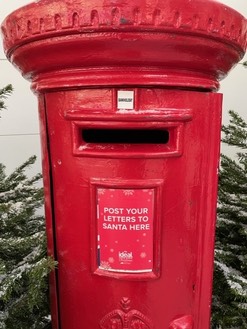
With Christmas fast approaching our thoughts are once again turning to gift giving but if you’ve taken the time to declutter, clear the decks and create space in your home do you really want to fill it again in one day? Incidentally, if you haven’t already, now is the time to persuade children to pass on some of their old toys to make space for what Santa may bring. It’s a great incentive.
Below are some different approaches on gifting to consider:
No gift option - not an option for most of us (unless we’re planning for WW3 to break out in our home) but you could declare a ‘gift amnesty’ among friends and prime grandparents to gift vouchers or cash
Experientialist approach – rather than give physical gifts give experiences. This can be from the simple, eg, a home made ‘promise’ voucher for babysitting, movie night etc. or a special play list to a big day out eg. a theme park play centre /museum membership (the Transport museum was always a big hit in our household!)
Support small local companies buy buying gift vouchers eg, a luxury manicure for a good friend
Hand made - if you’re a bit crafty (and have time) this can be a good option or if you have older children you can get them busy making bath bombs or friendship bands for friends – there are a multitude of ideas a google away. Photobooks and calendars are simple to make and can be fantastic gifts for grandparents.
Edibles – I always think the best gifts are ones you can eat! (or drink) You can always try your hand at making flavoured oils, fudge, lemon curd or chocolate slabs or buy some ready made from your local Christmas fair
Gently used this avoids a packaging mountain. Let’s face it, the average 3 year old won’t know or care if it’s hot off the shelves or pre-loved. You need to start early with this option as certain toys sell out fast in the run up to Christmas on ebay (lego, duple, train sets, playmobil)
Buying new – try and buy the most sustainable option, a well made item will last longer and keep it’s value if you want to re-sell it later. Also if buying new, try buying something that the recipient needs and will definitely use – I like the old adage for children ‘ something they want, something they need, something to wear and something to read’.
One option is to buy one really good gift rather than lots of small bits of plastic tat (much as little one’s are drawn to them). If you’re gathering with family each member could agree to buy one gift for one allocated person rather than multiple gifts.
For parents and friends wanted to buy something for the children, you might want to say that they are saving up for X and to put money towards that.
If you usually swap gifts with your girlfriends, why not veto gift giving this year and suggest spending that saved cash on a well deserved night out together?
Unwanted gifts – Don’t feel obliged to keep these. The gift is in the giving and receiving so receive with gratitude and put aside to re-gift or pass on to a charity/school fair (you may want to label who the gift was from if you’re re-gifting to avoid your blushes!)
What’s on my Christmas wish list? Chocolate (which won’t last for long) and
snow
Morning routine
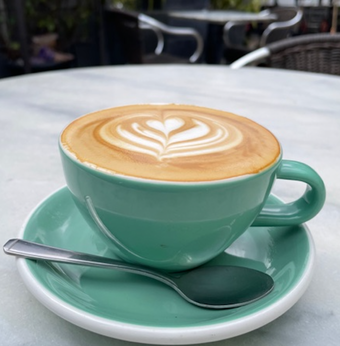
I know what you’re thinking – who has time for a ‘morning routine’ when on my best days just getting the kids to the front door in time for school is a huge win? You may have read about ‘the top morning routines of successful entrepreneurs’ etc. but I’m not talking here about getting up at 5am for yoga, gratitude lists and green tea (although, if that’s your bag – great!).
I’m talking about organisational steps you can do in your home right now that will win you back crucial minutes in the morning and help everything to run smoothly. I find that if I start the day on a bad footing it tends to impact on the rest of the day.
Although I’m talking about ‘morning routine’ perhaps it’s really more about the night before as evening preparation is key to making the morning run smoothly. You may already be taking some of these steps but there may be some more you can add to your toolkit.
- Provide children with a clear A4 wallet that fits in to their school bag – this is for all the letters they bring home from the school. This avoids finding them later in a crumpled heap at the bottom of the bag.
- Encourage children into the habit of removing the wallet of letters to be signed etc. and their water bottle/lunch box from their bags as soon as they get home. This will enable you to sign any forms etc. and avoid the morning panic.
- Ensure completed homework/books needed for the next day are packed in school bag (a timetable somewhere you can see it helps)
- Make packed lunches and store in fridge
- Lay out clothes for the next day – this applies to everyone. If you go to the gym/run in the mornings, then having your kit ready in the bathroom where you can just pull it on can help.
- If you walk your dog first thing, make sure you have everything ready and handy
- If you’ve taken the time to declutter and organise clothes so that you can see everything at once, and they’re all accessible really helps speed things up. Also, a smaller wardrobe of clothes that you love 100% will help make selection easier.
- Having a place for everything (and making sure everyone in the family knows where everything ‘lives’) is key to prevent last minute panics looking for keys, glasses etc.
- Keep breakfast foods simple and accessible
- Always make your bed. If you don’t accomplish anything else today, at least you know your beds made.
- Keep an organised hallway – if you’re lucky enough to have a wide hall, coats, everyday shoes and school bags can be stored here.
Local Mums Discounts
Don’t forget I offer Local Mums members three hours of virtual tidy sessions for the price of two. Check out our Local Mums Discount page for my and other great local discounts!
The Curated Home

Who’s been to an art gallery or museum and admired the beautifully displayed collections? There’s plenty of space to walk around without bumping into things and enjoy each piece on its own merit. Did you know that they all have huge storage facilities and rotate their displays when needed. In fact, The British Museum has 90% of their collection safely stored away!
Now I’m not suggesting our homes should look like museums (unless you’re the Adams family, in which case, that’s fine) or that we should just stick everything in storage but could you consider working towards a beautifully curated home?
That is, one that contains only items that reflect your lifestyle and personality and that you love – or as Marie Kondo puts it, items that ‘spark joy’?
So, how do you achieve this?
Vision
I’ve mentioned in previous blogs, the importance of vision (February 2021), knowing what you want your space to look and feel like. Once you know what you’re aiming for, it’s a lot easier then to choose the items that currently support your lifestyle and let go of the rest, category by category beginning with clothes (the easiest first!).
Selection
By positively selecting items you want to keep for your curated home rather than counting out how many bags you are sending to the charity shop the whole process is more joyful and positive.
Display (or placement)
Once the selection process is complete, then you get to have fun and, just like museums and galleries, display your treasures where you can see them and enjoy them. Sometimes the enjoyment is because they are accessible, for example, being able to reach into a kitchen cupboard and pull out the soy sauce without hunting through a forest of bottles or vertically filing your t-shirts. Other times, you might want an item on display so that it brings a smile to your face when you see it.
After going through the process of decluttering, I came across a collection of snuff bottles from my time in Hong Kong, stuffed away in a box, forgotten about. I found a nice wall display to house them – it doesn’t take up any space and really brings me joy when I pass them on the landing. If you find items you don’t want to display, it’s often better to say thank you and goodbye to them than leave them to stagnate in storage but if they bring you joy – keep them with confidence, display them, use them.
Those lovely, perfect, staged interiors photos you see on Instagram may have you aspiring to something similar but your home should be as individual as you are – whether you’re a minimalist, maximalist or sit somewhere in between.
Local Mums Discounts
Don’t forget I offer Local Mums members three hours of virtual tidy sessions for the price of two. Check out our Local Mums Discount page for my and other great local discounts!
What your clutter could be costing you

We often look at the things we own and put a certain value on them – whether it’s a sentimental value or a monetary one. This can drive us to hold on to things well past their use because of their perceived value. For example, you may have spent A LOT of your hard-earned cash on a designer dress then never wore it because the right occasion never came up or it just didn’t look right. Do you really want it to remain hanging in your wardrobe as a grim reminder of the money you spent if you’re never going to wear it? Have you considered that there is a cost to holding on to things?
Emotional cost
This could be your pre-children small size clothes, an expensive purchase that never quite worked or items reminding you of past relationships. Whatever it is, do you really want it confronting you every day? Your home should contain items that make you feel good.
Space
The cost of real estate in London ranges from £562 – 1,491 per square foot depending on area. With that it mind, how much free rent are you going to give to items that you don’t even need in your home?
Time
This is mainly time spent looking for things. Time is probably one of the most precious commodities there is - did you know the average person spends a month out of every year looking for lost items? How many times have you spent searching for a document, keys, the tights that don’t have a hole etc. I’m sure you can think of a million better ways to spend your time.
Putting things back in their designated place (and getting others to), having items accessible and easy to see is key.
As well as looking for lost items, choice can cost you time. Let me explain, if you have a wardrobe containing a smaller selection of clothes but you can see them all, access them all and know each item fits you well, looks good and doesn’t need repairing how much quicker would it be for you to get dressed to go out? Think about how easy it is to get dressed when you’re on holiday and have just one suitcase of clothes.
The more choice you have, the more decisions you have to make, and this can take up time.
Energy
How much energy do you spend moving things around to try and find something? Or perhaps the items you need to use aren’t where you need to use them?
When it comes to cleaning your home, think how much easier and quicker it is with clear surfaces and nothing on the floor.
Money
We’ve all done it – gone out and bought something only to realise we have the exact same thing already at home (but it was so hidden away we couldn’t see it). Knowing what you have will help you avoid repeat purchases.
Are you ready to make some savings?
Things you can declutter right now (one small step)
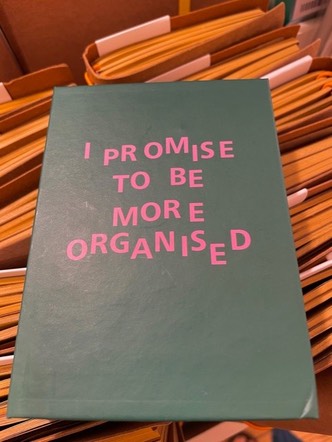
The children have resumed school and nursery, the ‘Big Declutter’ job that you’ve been putting off is now looming. If you’re having kittens just thinking about it, don’t let the overwhelm put you off.
Sometimes when decluttering you just need some small wins to get started. Don’t worry if you don’t have time – here are some items you can say thank you and goodbye to right now. Don’t worry, you just have to pick one!
- Magazines not in the current month
- Newspapers
- Stained clothing
- Frayed towels (and towels that can stand up on their own!)
- Shoes that pinch
- Socks with holes
- Broken items that can’t be fixed (you know, the thing that’s been lying on the kitchen table forever!)
- Old mobile phones
- Cleaning supplies that haven’t been used in a year
- Last year's suncream
- Old cans of paint that have gone dry or separated
- Those little dispensers for children’s pain relief medicine (just keep one)
- Expired medicines (yes, that half empty bottle of Calpol)
- Dried up pens, broken biros
- Chipped mugs or plates
- Any random leaflets that come through the door
- Takeaway menus (you can look them up online anyway)
- Ring binders that don’t meet in the middle
- Weird liqueurs bought on holiday that don’t work so well once back home
- Christmas hamper pickles you’ll never use
- Old catalogues
- Broken or wrong strength reading glasses
- Creased wrapping paper
- Old, used notepads
- Small change collect and take to the bank ( I love those machines at METRO)
- Old receipts (scan if you need a record)
- Birthday cards
- Wire coathangers (the free ones from the drycleaners – you can return them there for recycling)
- Business cards (take a photo with your phone for important ones or add directly to contacts)
- Half used notebooks
- Recipes cut from magazines (if you haven’t cooked it yet, you never will)
- Store reward cards (now you have the app)
- Keys without locks
- Padlocks without keys
- Rubber bands and name badges from expo’s, theme parks etc.
- Disposable chopsicks, mini soy sauce packets etc from take-aways
How many did you find?
Don’t forget I offer Local Mums members three hours of virtual tidy sessions for the price of two. Check out our Local Mums Discount page for my and other great local discounts!
Reset...
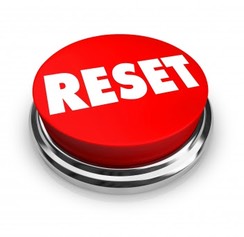
Marie Kondo’s Konmari™ method is supposed to be a ‘once in a lifetime tidying event’ but does this really mean once you declutter, organise and tidy that you’ll never have to do it again?
Of course not – unless you were to stop everything coming into your home, not buy another thing EVER, stop the kids from growing or move out. However, if you do a thorough and DEEP declutter – that is, going through everything systematically category by category as per the Konmari™ method you will have the much simpler task of maintenance. One easy way to do this is to have a regular ‘reset’. Everyone’s household is individual with it’s own needs and priorities so you’ll need to work out what works best for you. Here are just a few examples, I’m sure you can come up with some of your own.
Daily reset
- Once you’ve done a deep declutter, everything should have a home. Make sure everyone in your household knows where everything lives. So, for example, at the end of playtime, the children put away their toys. If you work from home have a clear desk policy at the end of your working day. Once the evening meal is finished, wash the dishes (or stack the dishwasher) so you don’t come down to a mess in the morning (that’s no way to start the day!)
- Plump the cushions on your sofa before you go to bed
- Put dirty clothes in the laundry
- Make the bed (teach the children to make their own!)
- If you have an upstairs, grab a basket and put anything in it that goes upstairs and take it all up at once to put away
Weekly reset
- Clean the fridge and take stock of what you have and what you need to buy
- Update family calendar
Monthly reset
- Declutter paperwork and weed out bills that have been paid, old receipts etc
- Check freezer contents and make sure oldest items are moved to the front
Termly reset
- Check school clothes still fit and declutter those that don’t to the school used uniform shop
Seasonal reset
- Take winter coats to dry cleaners before storing away
- Schedule a trip to the charity shop/recycling depot
Yearly reset
- Reset your vision – do your surroundings still support you?
- Analyse what’s working and what isn’t
Systems, habits and routines will help maintain your decluttered home. The aim is to keep things as simple as possible and not create more work.
Holiday packing
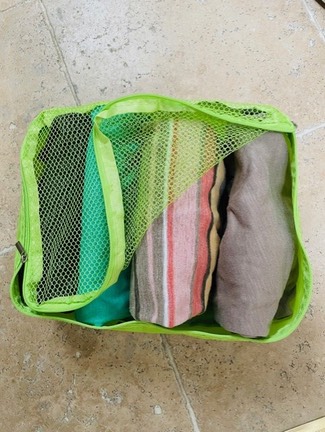
Whether you’re holidaying at home or away or staying with friends, I’ve got some great packing tips to help everything run smoothly. I’ve just had a lovely few days in our own Yorkshire Dales – perhaps not the Summer break I’d been planning but every bit as good. Maybe you’re already a boss at packing – in which case, read no further!
Can you remember back to before children when all you had to do was plan your outfits and pack for one? There’s enough to think about before we go away (even more so at the moment) so let’s get a system in place to simplify packing .
List – I love a list but never more so than when I’m packing to go away. I feel safe in the knowledge that once everything’s ticked off that list, nothing’s left behind. I find the easiest thing is to save a basic packing list on your phone or computer for each family member. This will include things you will need to take every time you go away i.e. the essentials. You can then add specifics each time depending on where you’re going and how long for. Only tick off the items once they’ve been packed. With older children, you could try giving them their own list so they can gather the items to pack. There are some great free templates available for eg. ‘holiday itinerary’ on apple numbers.
Gather – Get together everything on your list and lay it out on the floor or bed (even better if you have a spare bed and can add to the pile as the laundry’s done). You will probably only wear half of the clothes when you’re away so go through and remove anything unnecessary. Think about clothes that can double up (eg, a long-sleeved shirt worn as a jacket, family shampoo combined with body wash), will you have access to a washing machine? Sticking to a simple colour palette of say, three colours, will also help you create more outfits. Cross off your list anything you won’t be taking.
Pack – There are two main methods of packing that will leave your clothes crease free (you didn’t go on holiday to iron, right?) - the ‘lay it flat’ method or the fold/roll method. As a KonMari™ consultant I subscribe to Marie Kondo’s folding method. I’ll tell you why – it means that when I unpack, I can just lift the vertically folded clothes out of the suitcase and put them directly in the drawers/cupboards. I can see exactly what’s in my case without having to lift things – and if space is tight, clothes can stay folded in my case and will remain easily accessible. You can go a step further and use ‘folding cubes’ as shown – these fabric cubes enable you to keep like with like – so you can for instance, fold and store all your tops together or have different colour cubes for each family member if you’re sharing a suitcase.
I’m not going to go into all the ins and outs of packing as I’m sure you’ve got your own preferred methods but it’s worth remembering the following:
- make sure any suncreams, shampoos etc. are in separate sealable bags (you only need have a bottle leak once and you’ll always remember to do this!)
- pack shoes around the outside of a case (use shoe bags if you have them)
- pack heavy items (hairdryers/toiletries) in the centre of the case first
- bring a laundry bag/pillowcase or two so you can put laundry directly in there – then when you get home it can go straight in the machine
Have a great holiday!
Preparation
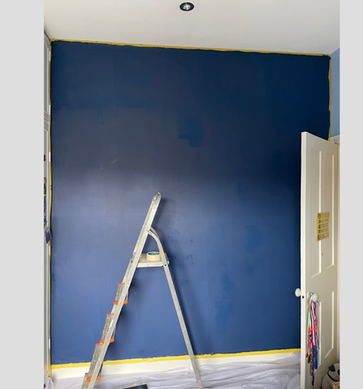
I want to talk about PREPARATION. That is, what steps you need to take before you begin to declutter your space. If you’ve ever painted a room, you’ll know the more time you spend doing the prep properly, the better the result will be and the smoother the paint will go on. It’s the same for decluttering.
Time – the first thing to do is to block off and ring fence time in your calendar. It’s easy to dismiss a task like decluttering as unimportant and shift it down your ‘to do’ list but how you feel about the space around you really does have an impact on other areas of your life. Even at it’s simplest, having a less cluttered space will save you time spent cleaning. Be realistic about the time it’s going to take for each task and don’t try and do it all at once! Once you have the date in your diary, don’t forget to tell other members of household – they may not be completely on board but at least they’ll know you haven’t finally lost it!
Vision and purpose -what do you hope to achieve? Why do you want an uncluttered space. Is it so that you feel more prepared when friends drop round unexpectedly? Is it to free up time to do other things ( looking for lost keys etc. can take up so much time), is it to have a calmer environment? Your reasons will be individual to you. Use a vision board (see blog…..to see how to make one to help you
Practical matters - that is, equipment and space. Gather together everything you need to help your task run smoothly. This could include for example; boxes or bags for your discarded items, post it notes/labels, folders if you are sorting through paper clutter, category check lists, cloth/hoover to clean the space once it’s been emptied, water to keep hydrated. Also, prepare the space. By this I mean think about where you’re going to put items as you empty cupboards and sort through them. If you’re going through kitchen cupboards you may want to put a cloth on the floor an sort things there. Clothes emptied from a wardrobe might want to go on a spare bed (or your own bed if you are confident, you have enough time to finish the task completely before bed time!)
Exit route – Once you know what’s leaving the house, make sure it does as soon as possible. To enable this, have a think before you begin about the types of things you will be discarding and which charity shops etc will take them (and when you can take them there).
A word about craft supplies

So, some of you will be thinking ‘who on earth has time for
crafts?’ Others will be aspiring to have their own CRAFT ROOM one day… This one’s for the crafters/would-be crafters. I’m a ‘dabbler’. My mum taught
me to ‘learn one new thing every year’ – which sounds great, but I ended up
with all the paraphernalia associated with each new hobby (millinery, painting,
jewellery making, patchwork, knitting… ) the list goes on. I knew I had to have a serious cull and
choose one or two that I really enjoyed and just keep the best supplies
associated with these.
So, how do you declutter and organise your craft supplies without feeling overwhelmed?
Before starting – have a serious think about which crafts you still enjoy and have time to do. All those supplies take up valuable space not just physically but unfinished projects take up ‘brain space’. If you started a project 5 years ago – what realistically are your chances of ever getting round to finishing it?
1 – This is going to take time, so find a clear an area where you can put out all your supplies for one craft. Put with it anything associated with this craft from around the house (for example, you may have a sewing basket, but you also have sewing scissors and thread left out from labelling school uniform). Grab a large box and label –‘ discard’
2 – Now separate into piles, putting like with like. This enables you to see what you have, and if you have any duplicates.
3 – As you put similar items together, choose the best – the items you will actually use soon – and put the rest in your discard box. This includes all the bits of fabric, ribbon, paint, spare buttons etc. left over from previous projects – chances are, you will never get round to using them. Clients of mine who are teachers always see every scrap of paper, piece of string etc as a ‘resource’ and are hesitant to discard them but they are only a resource if you will use them and know where to find them!
Knowing that you spent a lot of money on supplies should never be a reason to keep them. The money has been spent – don’t feel guilty about letting them go. Before you start decluttering, it’s worth doing a bit of research to see where you can send the supplies you no longer have use for. Here are some ideas to get you started:
(1) Donating Unwanted Craft Supplies (crafting4good.org)
Work and Play Scrapstore - West London Waste
Age UK needs your yarn, needles and pattern donations for knitting | Life | Yours
4 – Repeat for each craft
5 – Now the fun part, now that you’ve decluttered – it’s time to organise. You may have a craft room, or it might be a cupboard, a drawer or a shelf. Whatever you have, it’s worth having a look on pinterest and in craft shops for inspiration. There’s a wealth of ideas on the web. The main thing you need to remember is that everything should be – VISIBLE and ACCESSIBLE.
Store things vertically where possible, make use of hooks, peg boards and shelves. If you’re using boxes, use clear ones (or wire baskets) so you can see what’s inside. Repurpose over door shoe holders for small items. Be inventive, use what you have.
Once everything’s got a permanent home then you can start labelling- either using a label maker, printing from the computer, hand writing sticky labels or carboard tags – whichever ‘look’ you prefer – just be consistent.
You’ll find that once you’ve pared down your supplies you will actually have more time to spend (and more inclination) on the crafts you truly enjoy. Have fun!
Things professional organisers have in their kit and one thing they never have
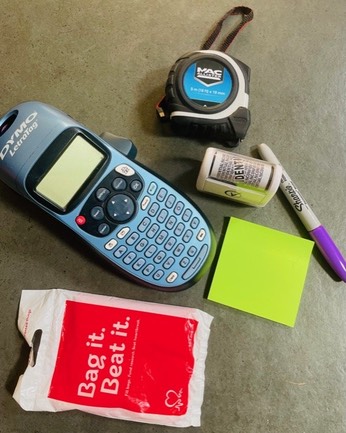
This week I thought you might like a cheeky peek into what professional organisers might take with them on client visits. It’s not an exhaustive list and every organiser is different. These are just some of the items I’ve found come in handy time and time again. You’ll probably find you have most of these items at home already...
Tape measure – always useful for measuring cupboards to see how much space there is for storage units
ID protection roller – these are great for when you have a small amount of printed papers with personal details on them to discard instead of shredding
Label maker – I have a hand held ‘Brother’ one that I absolutely love. Most models have a selection of tapes for a multitude of uses – paper, wash proof and even iron on labels for school kit. Spare batteries and tapes are a must when I visit a client. If however, you like the large ‘home edit’ style labels you can find a large range on Etsy
Masking tape - If you don’t have a label maker and want to make a temporary label for something, masking tape does the job perfectly and is a good low cost solution. I like to use them to label ‘use by’ dates on the underside of glass jars I’ve decanted food into.
Screw driver – sometimes to create the right space in a wardrobe or kitchen cupboard all that’s required is a shelf moved up or down.
Cable ties – as well as using for their intended purpose, grouping cables neatly together, they can be used to hold other objects together eg pencils. I have some lovely Velcro ones in different colours (Robert Dyas/Amazon stock these)
Black sharpie – for marking boxes of discards with their intended destination
Post it notes – these have so many purposes; they’re not only really useful when sorting paperwork into categories or when organising printed photos but also good to label piles into keep/donate/recycle and ear mark empty cupboard space before items are moved there.
Bin bags /charity bags – for those items that are going to another home. Before decluttering it’s always good to have a clear exit policy and know where you are going to pass on the things you no longer need. The quicker they leave the home the better!
The one thing professional organisers always leave behind?
Judgement
Sustainable decluttering

So here’s the thing, I really, really care about the environment and climate change and often feel bad because I’m not doing enough but according to Howard Zinn ‘we don’t have to engage in grand, heroic actions to participate in change. Small acts, when multiplied by millions of people, can transform the world.’ In other words, everyone doing a little bit is better than one person doing it all. People often ask me how decluttering can go hand in hand with sustainable living given that it’s all about ‘tossing things out’. The answer is that decluttering can actually give you HUGE sustainability points if it’s done the right way.
First, you need to realise that decluttering isn’t an instant fix. I could easily walk into a client’s home, dispose of unwanted items and leave it looking pretty but I can guarantee that three months down the line the clutter levels will be pretty much back where they started. It’s easy to get into the cycle of buying things, clearing out then buying more things to replace those things. Here are some steps you can take to ‘break the cycle’.
- First look at WHY you have accumulated a lot of things in the first place. What kind of shopper are you? How can you avoid the same pitfalls in future? TIP – if you want a clue, go to your Amazon account and look at your past buys
- Now look at why you’ve kept things, some common reasons might be:
‘It cost me a lot of my hard earned money’ – the money’s already been spent. Keeping it won’t get you your money back.
‘It was a gift’ – the gift was the joy you got at the time you received it
‘It’s useful’ – my Dad was always picking up ‘useful pieces of wood’ – they may have been useful to someone but definitely not to him as he didn’t have a workshop
‘I’ll use it some day’ – ‘some day’ often means never
‘It has sentimental value’ – this is a tough one, but better to keep fewer sentimental items that REALLY MEAN SOMETHING and display them where you can see them than have a whole load of stuff buried under the bed
‘I’m keeping it for my children’ – it was a tough lesson when I realised my son didn’t want my collection of ID magazines from the 80’s
Decluttering is a teaching tool – it teaches us to value and look after the items we choose to keep and not make the same purchasing mistakes.
Get to know where you can repair items locally, for example, does your dry cleaners offer a clothes alteration service?
‘There is no such thing as AWAY. When you throw something away it must go somewhere’ Annie Leonard
The aim here is to keep your declutterings out of landfill. This means re-homing them. It’s good to get things off the premises as soon as you can so make sure you think about where it’s all going to go – do some research.
So, for example, you could organise a clothes swap with other mums in your post-natal group.
Sell items – just know that you will often get less than you think you will. If you have higher valued items, it’s worth using a third party eBay seller e.g. Stuff U Sell A new, simpler way to sell on eBay | Stuff U Sell
Take items in good condition to the charity shop – just call ahead to check what they’re accepting.
Use textile and shoe banks.
Make use of apps like Olio OLIO – The #1 Free Sharing App (olioex.com)’, ‘freegle’ Freegle - Don't throw it away, give it away! (ilovefreegle.org) and Nextdoor
Recycle now is a great resource if you get stuck Recycle Now | Where and How to Recycle
When it comes to organising storage for my clients, I always encourage the use of storage boxes they already have - scroll down to last July’s blog to find out more.
Once you’ve decluttered take the time to reflect on your past buying habits and really think responsibly when you make future purchases; buying less, buying better and buying things that last benefits us all.
Cable spaghetti!

Do you have a bunch of unidentified cables in your home,
tangled together but kept in case one of them turns out to be super
important? Or perhaps you have so many
chargers and cables plugged in everywhere it’s sometimes hard to remember what
goes with what. Don’t worry, you’re not
alone…
So, here’s how to deal with your cable spaghetti
First, let’s address that big pile of cables - for this project you’ll need time and a pinch of patience (a quality my husband tells me I’m severely lacking – 20 years with him says otherwise).
1 – get out all your cables and match them up with items you have
2 – label each cable – I use a hand held label printer but you could just as easlily write on a piece of masking table and stick it to itself. At the same time you may want to label related charging plugs.
3 – put all those old unmatched cables that you were holding onto ‘just in case’ in a bag for recycling
Recycling solutions:
Most local authority recycling take cables, chargers and plugs https://www.wandsworth.gov.uk/rubbish-and-recycling/
Vodaphone take Accessories such as head phones, powerbanks, chargers and data cables,
Rework take cables, chargers and plugs https://www.groundwork.org.uk/hubs-old/london/
Freecyle/freegle are good for offloading specific parts and It’s worth checking with your local secondary schools to see if they need cables for STEM projects
Now that you know what goes with what, you need to store them effectively. An internet search will provide many solutions, but these are my favourite:
1 – Store cables you use less frequently in a box with compartments - I use one of those boxes designed to hold Christmas baubles.
2 – Use spiral cable concealers or binder rings to group together several hanging cables coming from one piece of equipment. Velcro cable ties spaced at intervals also work.
3 – Conceal your power strips and extension cords using cable tidy boxes. Any fire proof box with an inlet and outlet will do. I found some nice inexpensive ones in Flying Tiger
4 – Fastening bulldog clips to the side of your desk and threading cables through can keep them off the floor
My top tip is to label the cable/plug of any new tech
straight away – it really will save you time.
Garage
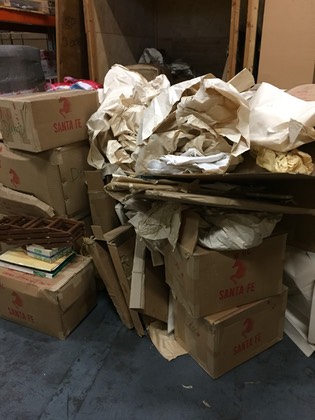
The weather’s finally warming up a bit so now’s a good time to tackle your garage. I’m not lucky enough to have one myself but my parents garage ended up as an overflow storage unit – no -one had any idea what was in there and looking at some of my clients, they were certainly not alone. In London, real estate is expensive and every square meter counts – why would you want to fill it with junk? Below, is an overview of making your garage space fit for perfect.
All of my projects start with two things – commitment and vision. So first, look in your diary and importantly the weather forecast (as much of the contents will be hauled outside) and commit to a couple of clear days. You may need another pair of hands so factor in their availability too. Also, think about where you’re going to dispose of things you no longer need , for example is there a local charity that can collect large items (and can you organise a collection on the day of your clear out) do you need to hire a skip, what day is your rubbish collection?
Next, have a good think about how you want to use your garage space – do you need it to park your car, store bikes or use as a tool shed or workshop? Draw out a plan with measurements and buy any shelving you might need. Once you have a clear vision of it’s intended purpose then you can begin.
1 Clear out – designate three separate areas; items to keep, items for donation or sale, items for rubbish or recycling.
Throw the rubbish out straight away (in bins or a skip) so you’re not dealing with it twice.
As you put items into your ‘keep’ pile, put them in categories e.g., tools together, gardening equipment with handles together, paint together etc. That way you can see exactly what you have.
2 Clean – Now is a great chance to get rid of those cobwebs, sweep down the floor and take a good look at how much space is available.
3 Store - Take stock of any existing storage you might have – do shelves need adjusting or moving. What worked for you and what didn’t? Take a look at your keep pile – hopefully you’ll have less to put back in.
Look at the space – do you want to store things vertically or horizontally? Are you able to hang things from the ceiling?
Aim to store as much as possible off the floor – you don’t want to find your garage has become a vermin hotel
Good storage solutions include:
- Clear plastic tubs – it’s really important to be able to see the contents.
- Pegs, hooks and peg boards
- Wire racks
- Adjustable shelving
Declutter your garden

For those of us lucky enough to have gardens it looks like we’ll be spending a lot of time in them this year with visiting friends and relatives hastily marched through the forbidden indoor area to the outside. But hang on - the garden hasn’t been touched since last Summer, it’s a complete mess and your five best friends have invited themselves round next weekend!
Ok, don’t panic. Like decluttering a room, you’ll be doing it one step at a time...
1 Remove the rubbish - grab a bag and gather up all those old broken pots (or those housing dead plants), dog mauled tennis balls, broken clothes pegs, damaged tools and anything else that shouldn’t be there. Any reusable pots, bamboo sticks etc should be gathered together and put in one spot. Any tools in good condition that are no longer used can be donated to The Conservation Foundation’s Tool Shed project Tools Shed - The Conservation Foundation which works with prisoners to refurbish them and pass them to schools. Or www.workaid.org which collects to refurbish and ship to Africa.
Outdoor toys – collect these together – are they stlll used and fit for purpose? Give them a clean and sell or give away any in good condition that the children have outgrown. Store the keepers in one place in waterproof boxes or bins.
2 Tidy up - Trim your hedges, weed the flower beds and mow the lawn.
3 Clean - If you have a BBQ, is it ready for use? Mix 500ml of vinegar and the same amount of water in a spray bottle, spray the solution onto the grill and leave for 10 minutes. Empty the bottle, refill with vinegar, spray on and then scrub to clean the grill and the inside.
Garden furniture – scrub down and leave to dry in the sun – does any of it need fixing, a lick of paint or new covers?
Patio – give it a good sweep and a hose down. If you want to make it look really good, borrow or hire a pressure hose www.libraryofthings.co.uk
4 Decorate – think of your garden as another room in the house – add some solar powered fairy lights ,cushions ,rugs
5 Pour yourself something cold, sit back and enjoy!
A good night's sleep
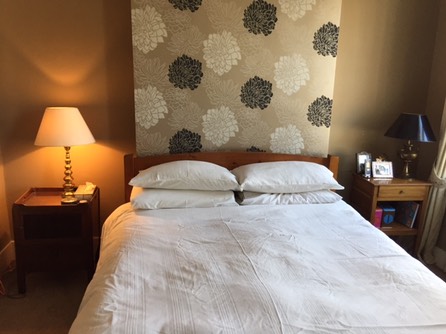
Nothing makes you feel better than a restorative nights sleep and nothing makes you feel worse than not having one. I’m not a sleep expert but I do recognise that having a calm uncluttered space dedicated to sleep and nothing else goes a long way to helping. So, here are my thoughts...
A room fit for purpose. I do realise that in these Covidy times you may have had to squeeze a work desk into your bedroom but if at all possible, the best nights sleep will come from a room that is dedicated to sleep only. That is, the only reason you go in there is to sleep (or to change, assuming your wardrobe is in your bedroom). If your desk is there, your thoughts at night will be drawn to work. Best to keep TV’s out of bedrooms too.
Clutter. It can be harder to get a good nights sleep when your surrounded by clutter – it’s distracting and certainly doesn’t imbue the calm atmosphere you’re looking for. Think about when you’re on holiday and stay in a hotel (I know, distant memories!) How easy is it to get to sleep in such a calm, uncluttered environment. Keep that in mind – this is what you want to create. Now take a look at your room and see where the clutter hot spots are – the common ones are...
Under bed – you may have a divan drawers or under bed storage containers - do you know what’s in them? Or maybe like many people you have a host of things you no longer want or need shoved underneath gathering dust. Put aside some time and take everything out, then put back only what you need.
Floordrobe – not just the domain of teens! Get everything off the floor and back in the cupboard. It really will save you time in the morning when you’re not scrabbling through a pile.
Chair/exercise bike – so many of my clients have a chair or exercise bike in their bedroom that isn’t used for the purpose it was designed for but has been repurposed as a make shift clothes horse. Just don’t.
Side table - these are very useful but don’t use them as an excuse to dump stuff. If you like to read in bed, you just need the one book you are currently reading. Try and keep it as clear as possible.
Other things to consider - to create that ‘boutique hotel’ feeling you may want to add some:
Natural scent – I know candles are very popular but the tiny particles they give off are both polluting for our homes and can cause health problems. Why not consider something more natural – essential oils added to baskets of pine cones are a great way of scenting a room or if you like sprays, you could add a few drops to water in a spray bottle. Good oils in the bedroom include lavender, clary sage, valerian root, roman chamomile and sweet marjoram.
Fresh scented flowers or dried lavender are also lovely to have around.
Crips white sheets – Ok , they can be any colour you want! My indulgence is organic cotton sheets which truly give me the best nights sleep but whatever bed linen you use, make sure it’s changed regularly. And don’t forget to turn your mattress every season (you’ll need an extra pair of hands for this one!)
Guard your sleep - it’s precious!
Spring cleaning v decluttering
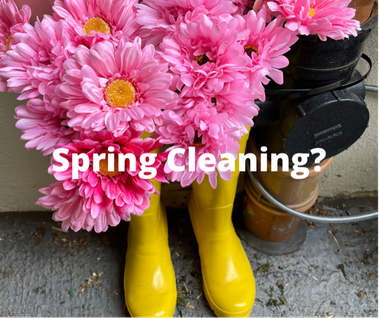
Spring is in the air and many a mind is turning to ‘Spring cleaning’ - not mine, I might add as cleaning is not my favourite pastime.
With that in mind, I’m all for ways to make cleaning easier. You can go online and find many cleaning schedules but none of it will help if you don’t declutter first.
Yes, decluttering comes BEFORE cleaning.
The advantages of decluttering first are:
• You have less to clean - why spend time cleaning things you no longer need or want?
• It’s a lot easier to clean clear surfaces so try and keep all flat surfaces clutter free. If you find this difficult, start with one surface, for example a coffee table or bedside table and experience the pure joy of a clutter free surface. Then, add a new one each week. Note, with this one you have to be VERY strict with whomever you share your house with and make sure everyone abides by the no dumping rule. That’s not to say surfaces can’t be used but after they’ve served their purpose (e.g. art homework project, dinner) clear everything away.
• If you’re decluttering your wardrobe or cupboards you can give them a really good wipe once they’re empty.
• You can clean more quickly if you have less items to lift/move around and time is a very precious commodity these days! This also means day to day maintenance cleaning eg, wiping the kitchen worktop, cleaning round the shower takes minutes and doesn’t seem like such a chore.
• Decluttering can bring up a lot of dust - think of all those books that haven’t been moved from their shelf for years, that stash of stuff under the bed…
• While you’re on a decluttering roll, why not take a look at your cleaning supplies and ditch any empty bottles - update your mop heads etc. so you’re good to go.
If you do want to clean once you’ve decluttered take a look at my Local Mums Online blog September 9th below for some budget and environmentally-friendly cleaning products.
Back to school
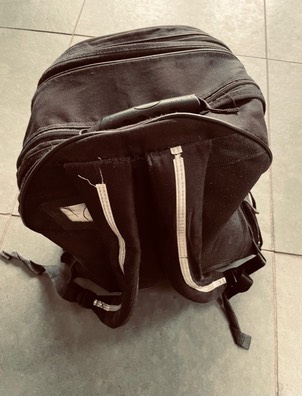
After what seems like years of the children being home from school – suddenly they’re back. Did anyone else discover their offspring’s feet had grown a whole size? I practically shoe horned my son’s feet into his old shoes which will have to do until the new ones arrive. It really feels like a new school year, so with that in mind I’ve got a few tips on how to keep school kit organised to keep things as easy as possible.
Your children will probably be using the same school bags from the last time they were in school and if they’re anything like mine, a half-filled water bottle will still be languishing at the bottom. Now, if your children are old enough – there’s no reason they can’t follow these steps themselves. (Delegation is key to a calm and happy life!)
Before you start you will need: newspaper, damp cloth, bin, small zip bags (preferably transparent) or similar, sticky name labels, label maker or marker pen.
Whether you have junior school or older secondary school children – the process is the same.
So, the first thing to do is...
Make a checklist your school may already have a checklist of items you must bring to school each day – make your own to include these and any other essentials and print it off.
Empty it out find a big space of floor and put down some newspaper before emptying everything out (including all the itty bitty pockets). Have a bin handy and put any obvious rubbish directly in in. Give the back a good wipe with a damp cloth and leave to dry (inside out if possible).
Sort the items with the checklist in front of you. Everything essential that’s on the list goes in one pile, everything else in the other. Now carefully look at the ‘other’ pile – is there anything that really needs to go to school? Your bag is a V.I.B. and only the most important items get to live in it! Move those items to the essential pile and put the others away
Fill hopefully the bag should be dry by now – take a look at your essentials pile and see if anything needs labelling, fixing (pencilled sharpened) or replacing (make a note). You are now going to group together smaller items that belong in the same category and keep them together either in a zip bag or in one of the pockets. For example, (spare face mask, hand gel and tissues), (lunch pass, bus pass, keys and phone), (pencil case). When filling the bag, it’s good to give each item a distinct place in the bag and use the same place every time eg. ‘my water bottle lives in the side pocket’, ‘my phone lives in the small inside pocket’ – that way its easier to retrieve things quickly. For secondary school kids it’s quite useful to have a separate clear wallet to put any random pieces of paper into.
The checklist can now be stuck on the fridge or blue tacked to the indside of the wardrobe door – anywhere it will be seen.
Of course, after a week or two the bag will end up with random sweet wrappers, bits of paper, birthday cards etc at the bottom so this is why it’s a good idea to -
Reset either on a Friday or Sunday afternoon by emptying out the bag and taking out anything not on the essentials list. I’ve found it’s a great way to discover parental consent forms squashed at the bottom!
So, now you have the bags sorted out – what’s the best way to store them?
Always store school bags where the children can easily reach them (and put them away) – seems simple enough – but if your child can't reach the bag peg, it will end up living on the floor
So, wall pegs are always good – especially for junior school age where the bags are much smaller and lighter
If you have a bit more space, there are some great IKEA hacks using Kallax cubes or you could use reconditioned lockers (with space to hang coats and store school shoes)
I would also highly recommend colour coding storage if you have a larger family.
Organising canine supplies

Did you know 6.6 million households in the UK own a dog? Whether you’ve had a four legged family member for a while or like many are new to pet ownership now is a good time to organise your pet supplies if you haven’t done so already. Canine clutter can very easily build up and migrate to all areas of the home. The good news is that the clutter can very easily be brought to heel (see what I did there?). Here’s how:
Everything you need for this very important family member can be divided into these basic categories;
- Toys
- Grooming equipment
- Food and medicines
- Clothing
- Things needed for walks
- Paperwork
- Miscellaneous
For each of these categories you’ll need to
- Collect everything together in one place, putting like with like to see what you have
- Declutter
- Organise (with correct storage and designate an area)
So, taking a closer look at each category
- Toys – does your dog have favourites that they use all the time and some have been untouched? Think about how many they actually use and need. Once decluttered toys can then be stored together in a basket where your dog can easily access them (and you can toss them back in afterwards)
- Grooming equipment – Again, sort through and make sure everything you have is being used, see if anything needs replacing and store together in a basket close to where you use it.
- Food and medicines – Some food is fine stored in it’s original packaging but if you decant it make sure that the container is airtight
- Clothing – do those coats still fit, need cleaning?
- Things needed for walks . Still holding on to the puppy collar that your dog has grown out of? Assess each item in turn. The best place to store these items is near the door where you can access them quickly for walks. Hang anything that can be hung on pegs and make sure bag supplies are replenished
- Paperwork - keep all pet-related paperwork together in one folder that everyone who needs to can access easily and quickly. This could be with your family medical files whether they’re kept physically or on your computer
If you use a car, it’s a good idea to keep some supplies in the car that you need for journeys, stored together in a box in the boot
Where to donate pet supplies:
Check with your local foodbank for unused dog food/treats
Local animal sanctuary/dogs trust (may need to wait until re-opening)
Vision
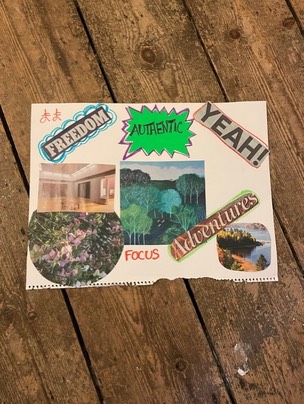
As a KonMari™ consultant I talk a lot about ‘vision’ with my clients before we embark on a tidying project. For me, this important first step is the difference between maintaining the organised space you want and relapsing into old habits. The aim is to visualize your ideal life.
To help you get started, you can ask yourself questions like
- What kind of lifestyle do I want?
- Is there anything I would like to do more of?
- What colours do I like to surround myself with?
- How would I like to spend my day?
- What surroundings make me feel most comfortable?
- When am I at my happiest?
I find it helpful to close my eyes and imagine my ideal day from start to finish going into every detail from the first sip of freshly ground coffee to the feel of crisp white sheets when I tuck in
Don’t set limits on your imagination and don’t worry if your vision seems fantastical.
Once you’ve completed this exercise, the next thing to do is to record it – you can do this by
- Writing it in a journal/notebook or on your phone where you can find it
- Drawing pictures if you love to draw
- Making a Pinterest board
- Making a vision board
Personally, I like to make a vision board – to be honest, I just have a lot of fun cutting and pasting! I make one every year and stick it in the back of my wardrobe – but you could take a photo and use it as your screen saver, or glued to the front of your journal.
Here’s how to make one.
1 Gather together all the old magazines you have lying around the house (this is also a great excuse to declutter that stash!)
2 You’ll also need
- Scissors
- Glue stick
- Felt tip pens/sharpies
- A3 card or paper (you can stick this on to the back of some card from a box to make it rigid)
3 Set aside some time and pull out all the pages that appeal to you and fit with your vision – this can include both pictures and words
4 Once you’ve got your pile next to you start cutting and pasting – it’s sooo thereputic
(You can always get the children to do some cutting and sticking of their own while you’re at it !)
5 Add some words of your own with felt tips/sharpies
6 Admire your work and stick it somewhere you’ll see every day
Mini projects
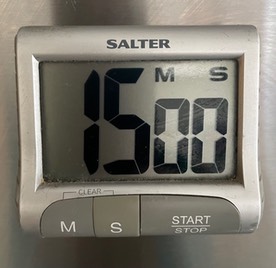
So here we are in lockdown #3 – sometimes taking on a whole
new project can feel overwhelming but doing bite-sized tasks can help give you
some control back and create a feeling of smug satisfaction. Here
are a few ‘micro’ projects you can do right now and will take less than half an
hour:
- Collect all the old magazines, papers in the house and put in recycling.
- Tackle your sock drawer
- Clear out your handbag/purse
- Clean the fridge and throw away any out of date food
- Empty your kitchen junk drawer, put like with like and put back only items that are useful (you can use containers to separate the categories)
- Check dry food storage for out of date items or close to date to use first
- Clear out your makeup bag/drawer and wash brushes in baby shampoo
- Collect all pencils and pens in the house, try them out and chuck the duds (sharpen pencils)
- Delete unwanted photos from your phone
- Clear message histories from your phone and update your apps
- Gather together all your umbrellas and discard any with broken ribs
- Go through childrens shoe collection and put aside any that are too small for your nearest shoe bank
- Vertical fold your tea towels konmari style and file in your kitchen drawer
- Grab a basket and set your timer for 15 minutes to collect everything you can from one room that doesn’t belong there
- Designate a permanent home in your house for your keys, purse and phone
- Put any rubbish in the bin/recycling
- Find 3 things to donate and put them in a bag by the door
- Sort through that pile of mail into keep, file and shred. Deal with anything now that will take less than 2 minutes
- Go through your cleaning bottles and get rid of any you don’t use
These are just a few ideas – I’m sure you can come up with plenty of your own. Whether you tick them off once a day or once a week is up to you.
Toy Storage
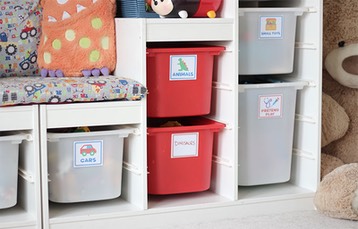
So, with Christmas behind us and, if they were lucky – more toys – now is the time to try and find space for them – whether it’s a corner of a bedroom, living room or dedicated playroom. I remember before I had children I swore that I would only let properly made wooden toys enter my home – somehow all the plastic tat made it’s way in!
A children’s play space should be both nurturing and inspiring with space enough that you’re not going to accidently stop on a piece of lego (possibly THE most painful thing you can ever step on!).
FIRST DECLUTTER – If you didn’t tackle this before Christmas, now is the time. Make sure you involve your children in the decision-making process. It can help to let them know that any toys they say ‘goodbye’ to will go on to make other children happy. Children will most likely play with what they can see and is accessible – use this to your advantage!
NEXT, ORGANISE – Divide toys first by child, then by category. Organise like with like and store together. Depending on the space you have/budget you can use baskets, drawers, shelving with baskets (that can be repurposed as book shelves as the children grow, units with baskets (eg, IKEA Trofast/Kallux shelves ) Smaller items can be grouped together and put in boxes, pouches, bags, recycled jars, tins. Drawers and containers can be colour-coded per child and labelled. If your children are very young, use pictures instead of words for the labelling.
MAINTENANCE – So, you’ve got everything in order – how on earth do you keep it looking lovely?
- Stick to a one in one out rule when accepting new toys.
- Set a good example. Tidyness is a taught skill - be their role model.
- Get your children to put everything away in it’s correct home at the end of the day (or at the end of playtime – at nursery they are used to doing this) – lots of techniques help with this – you could sing/play a tidy up song, set a timer to make it a race, allocate a basket to each child and let them go round and gather everything up in a set time. give rewards and praise for specific tasks.
- Watch what comes into the home – you’re the gate-keeper
- Get into the habit of doing a maintenance toy declutter before birthdays/Christmas
Post-Christmas clear up
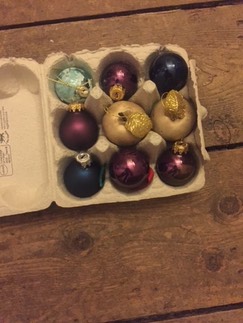
I love Christmas - the tree and decorations and all that
comes with it. I don’t know about you
but by January 6th I’m ready to have my house back. Possibly more
important this year when we’re stuck at home in Tier 4 and need a calm, clutter
free environment. Here are a few tips
for post Christmas organising - and
don’t forget to get the rest of the family to pitch in if they’re able.
Gifts – write thank you lists so you can write cards when you have a quiet moment. Put gifts away in their proper homes and keep gift vouchers together. Amazon vouchers can be entered directly into your account .
Unwanted gifts – hopefully you won’t have any, but if you do, put aside for the next school tombola
Put any clothing items that need returning aside to return as soon as you’re able.
Tree decorations - small baubles can be stored in egg cartons, larger ones in boxes with home-made separators. Keep colours separate and label each box. If there are any that are broken or you know you’ll never use, now is the time to ditch them. Wrap tree lights around empty wrapping paper tubes, a coat hanger or a piece of rectangular card with notches cut down both long sides. All of these will avoid ‘the great untangling’ next year.
Other decorations – box and label clearly. You might want to keep some of the items you will get out first easily accessible (eg, door wreath, advent candles. Unused wrapping paper). Keep all decorations together, store like with like, clearly labelled and in one place.
Rubbish – make sure you throw away all the packaging that any gifts came in. Any boxes you didn’t re-purpose for decoration storage can be torn up and put in your recycling bin now.
Tree – if it’s real – check the dates on your local council website for collection- wrap it in a sheet or put it inside a duvet to carry it outside to minimise pine drop. If it’s not real, then bag it for storage.
Christmas cards – reuse by getting the kids busy making gift tags or cards for next year or recycle
Food – hopefully by now you’ve used up the Christmas
leftovers (panettone bread and butter pudding anyone?) but if you find yourself with an extra tin
of biscuits/chocolates you know you won’t use you could give to your local
foodbank or isolated elderly distribution centre. Any weird pickles /pates etc can be rehomed via the ‘Olio’ app.
Give the fridge a good clean.
Last minute Christmas prep
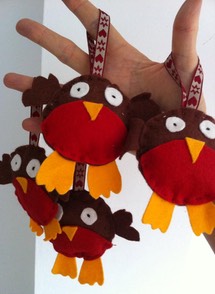
It’s always good to start your Christmas planning early but don’t panic if you’ve left it all a bit last minute – make a note to start sooner next year and use my emergency strategy:
Vision Before you start, have a think about the Christmas you want for yourself and your family this year – granted it might be a bit different! Do you want to incorporate old traditions, bring in new ones? Is religion or the magic of Christmas important and how can you include these elements this year? (You can do this one in the bath!)
Plan Make a plan – take half an hour (perhaps when the children are in bed), take out a fresh sheet of paper and write down everything you can think of that you need to do for Christmas – it’s so much better when it’s out of your head! Now go through the list and see if there’s anything you can either delete or delegate. Look at the list you’re left with and group tasks together eg, can you buy stamps with your grocery shopping? Remember that most shops will be closed on Christmas day so stock up on batteries, candles, crackers - things you are likely to forget.
Declutter You won’t have time now for an in-depth declutter of the entire house so I suggest going round each room with a basket, filling it as you go with anything that’s not supposed to be there. Set a timer if that helps. Hopefully you will have decluttered your food cupboards (see last blog) but if not, your priority now is fridge and freezer space – go through and dispose of out of date food and use up left overs.
Clean Now the clutters out of the way you should have lots of easy surfaces to clean.
Guests Make sure you have enough clean bedding, towels and think through your COVID safe plan.
Gifts Forgotten someone? Think about vouchers that can be bought quickly on line for services, meals out, memberships to gardens or museums and art galleries. Support small local business. The best gift you can give someone is your time. No wrapping paper? Use plain brown paper, you can get the children involved in printing it with potato stamps. If you have collections of old fabric (for that sewing project you never got round to) you can use it to wrap gifts using (google) the Japanese art of Furoshiki.
Cards Last posting dates for the UK are: Friday 18 December 2nd class, Monday 21 December 1st class. If you’ve missed them – send an e-card, a New Year card or better still – pick up the phone.
Decorations Involve the family – for example, keep them busy making paper chains, snowflakes or pom poms while you get on with other jobs
Above all, remember, IT DOESN’T HAVE
TO BE PERFECT!!
Happy Christmas X
Food cupboard
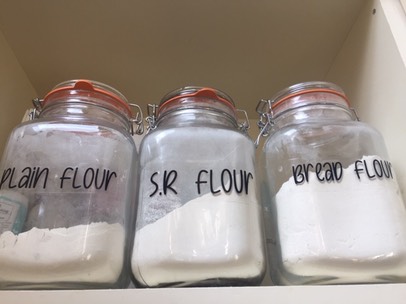
Whether you’re having family over for Christmas or not,
there’s no doubt there will be a lot more kitchen activity over the next
month. My husband’s family is Swiss, so
I always bake Swiss Christmas biscuits to bring a little bit of
Switzerland home. This year I’m ahead of the game and have
frozen the dough ready for baking in the holidays with the help of my son.
So, how can you prepare your food storage ahead of time so you can ease into the festive season?
First of all, you need to take stock of what you already have. How many times have you gone out and bought something and then found two already in the back of the cupboard? Knowing what you have can actually save you money. Here’s my step by step guide.
1 – Have ready a cardboard box for food bank donations
2 - Clear a space on your kitchen surface and take out your dry food supplies so you can see what you have. If you have a very small kitchen, you may want to do this one cupboard at a time.
3 – Go through each jar/can/packet and check if the food is still within date – if the date’s close, put aside to use up this week. Did you know spices lose their pungency? After 3-4 year you may as well be adding dust to your food!
4 – Have a look and see if there’s anything you would never use – clue: if you still haven’t used the kumquat chutney from the hamper you won at last years school Christmas tombola, you probably won’t ever use it. If you’ve gone overboard with the COVID stockpiling - is there anything on your locals food bank’s list that you can donate?
5 – Give those empty shelves a good clean and think about how you could best use the space – ideally, you want food that you use regularly within easy reach. Seasonings and oils nearer to the cooker where you would use them, heavier cans and tins lower down. (secret chocolate supply out of the family’s sight)
6 – Before you place the food back – group it together – i.e., dry baking ingredients together, breakfast things together, snacks together, sauces for Asian cooking together etc.
7- Put the oldest to the front so use use it up first
Notes on storage
You can go all ‘home edit’ and decant everything into storage jars – or just use what you already have . If you do decant, then use a chalk marker or a piece of masking tape on the base of the container to mark the expiry date.
Some people like to label everything – but, if somethings in a clear container then you can see what it is. Personally, I just label flour and sugar where it’s difficult to determine which kind it is.
Finally, if it’s all a bit overwhelming, start small and organise your spice drawer/shelf
The linen cupboard

At this time of year, some of us will be getting ready to host family and thoughts will turn to “where are they all going to sleep” and “who’s going to get the short straw and sleep in the bath” – Ok, probably not the last one. This year we don’t know what will happen by Christmas but it’s a good opportunity now, while nobody can stay, to take stock of your sheets, towels etc and see what you can ditch and what needs replacing .
So, how many of everything do you actually need?
As a rule of thumb, for duvet sets, sheets
and towels one in use and one in the laundry is a good place to start. Then, think about how often you have friends
and family to stay (or will in the future) and how many spare beds you have. Also, think about how often you run a laundry
– if you have very young kids and are changing the sheets often (sometimes at
2.30am!) an extra set can be a good thing.
What do you have already?
Set some time aside while the kids are at school/nursery and get out
all your sheets/towels – including the ones under the bed - and put them in one place, in their
categories. This will give you a really
clear picture of what you have. Also,
make a note of what is in use at the moment.
Now that you know the amount you actually need – go through and pick out
the very best from your pile and put these aside to keep. Personally, I find it useful to keep one old
towel handy for plumbing emergencies.
The rest can be put aside for donation/textile bank.
How much storage space do you have?
Take a look at your storage space and how
much you have. How tall and deep are
the shelves? Can they be moved? The goal is to have the items you use the
most, easily accessible. Many families
I’ve worked with prefer basket storage.
Storing linen in labelled baskets helps prevent them getting mixed up
and you can store sets vertically – storing sheets on top of each other means
that when you pull one out, they all tend to come tumbling down. Also, if they’re all the same colour, it’s
hard to see what’s what. I find it’s
also helpful to keep bed sets together – you can either fold the sheet and
duvet cover so that it fits into one of the pillow slips or fold the sheet and
pillow case inside the duvet cover. Towels can be folded or ‘spa’ rolled. It may all seem like a bit of a faff but the
time you spend now is time saved later. I like to keep small soap bars (the type you
pick up at hotels) tucked in between the sets to keep them smelling fresh.
*It doesn’t matter if you have an actual ‘linen cupboard’, a designated space in the wardrobe or some deep drawers – the principle is the same – Keep items in their separate categories, store vertically, most used at the front.
If you keep to a simple system and share with the rest of your family, you never know – one day they may be able to get out their own sheets!
Books
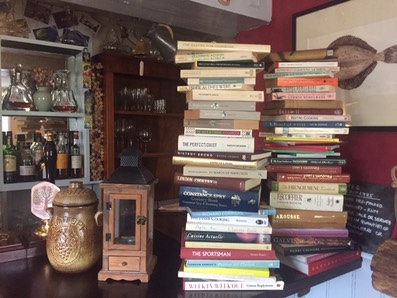
I have to admit, I love books; the action of turning the
pages and the weight in my hand, the smell of the ink. Now that we’re locking
down again, nothing beats them for a bit of escapism. I have a kindle which I love because it means
I don’t have to take umpteen books on holiday with me, I can access thousands
of books in an instant but I’m not ready to give up physical books yet.
So, the question is – how many books is it ok to have? The answer really is to keep as many or as few as you like as long as you have storage space AND you love each and every one of them
You might want to think about what purpose your books serve – are they a décor feature? Do you aspire to ‘Home Edit’ style shelves arranged in rainbow order or store them with the spine to the back of the shelf to maintain minimalist swathes of beige? Are the titles displayed and books chosen to impress visitors? Are they practical books for your or your children’s studies?
How to sort out your books
Have ready suitable boxes for the books that you will be passing on. More smaller boxes are better than one large heavy to lift box!
Power of the pile – it’s no good looking at titles on the shelf and deciding what you want to keep in situ – set aside some time (don’t underestimate) and remove all the books from your shelves throughout the house and gather together in one place. You can treat the children’s books separately and do at a different time using the same process.
As you gather them together, try and keep ‘like with like’ i.e. reference books, novels, travel, coffee table
Take a before photo!
Now you can begin to sort through, choosing the books that you really love and deserve to take up space on your shelves – you can ask yourself the following questions if you get stuck;
Would I buy again
Would I be upset if I spilt my glass of wine on it?
Is it easy to replace if I decide I can’t live without it?
If its been on my shelf for a long time and I haven’t got round to reading it – will I ever?
You’’ll also find some ‘easy wins’ - duplicates, library books to return, borrowed
Don’t forget to take plenty of tea breaks – it’s exhausting! If you find you have a lot to get through, you can enlist the help of a professional organiser.
Before putting back those books that truly ‘spark joy’ give your shelves a good wipe.
So, what to do with those books that didn’t make the grade?
You have several options.
Sell your books using a barcode scanning app like https://www.ziffit.com/ or https://www.webuybooks.co.uk/book-selling-app/ - they will collect from you
Donate to a local charity (call ahead first to see which ones in your area are currently accepting books once everything’s open again)
https://services.betterworldbooks.com/individuals/ who have a shop in Kingston accept books for the National Literary Trust
Don’t forget, there are many greener ways of enjoying books if you don’t like e-books
- Libraries – a fabulous resource, and if they don’t have the book you want, you can order it.
- Charity shops – use like a library and return after reading for re-sale
- Book swap with friends (great for children’s books)
- You can also set up your own ‘little free library’ https://littlefreelibrary.org/builders-checklist/
Half term activities with the kids

This half term you might be looking for
things to do with the children when they’re home. How about an activity that will actually help
you at the same time? Here are some of
my top tidy activities with children.
It’s never too late to introduce your little ones to the art of KonMari folding - a habit that will set them up for life. If you haven’t mastered the signature folding technique – now is the time to learn together. Did you know Marie Kondo has written a children’s picture book ‘Kiki and Jax’ which introduces the concept of tidying but also has some really great folding diagrams for them to try out?
So what’s so special about the fold?
- It enables you to see what you have at a glance
- When you pull out one item the rest don’t come tumbling down
- Clothes are less likely to crease
- When you’re touching the clothes it’s easy to see if they need fixing/cleaning
Here are some other tidy activities:
The 10 minute tidy game - set a timer, take a basket and pick up as many toys that are in the wrong place. If you have more than one child, you can make it into a competition.
Treasure hunt (Collecting like with like – choose an item eg, crayons and get them to find all the crayons and put them in their ‘home.' Or you could do it by colour - go through the rainbow)
Make a check list of age appropriate tidying jobs for each child and get them to tick the list as they go with prizes for completed lists. For younger children, you can use pictures rather than words.
Visualisation game – get a stack of magazines and some scissors and get the children to cut or tear images to stick to a large sheet of paper to create their dream house.
Tidying up needn’t be boring – put on some music and dress up! Batman or Cinderella will get the place tidy in no time! And yes, you can dress up too if you want...
Wardrobe refresh
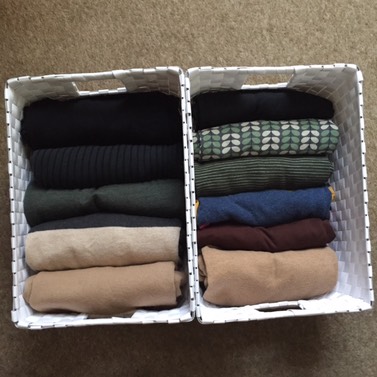
So, who’s up for a wardrobe refresh? Do you have an all-year wardrobe and keep everything together, adding a few layers when the temperature drops, or are you a winter wardrobe/summer wardrobe person?
Either way, now’s a great time to take a look at your clothes and re-assess if they are fit for purpose and reflect the person you are today. Before you start, pick a day when you know you won’t have any distractions and will be able to focus on the task in hand. Tip: it will take a lot longer than you think. Also, visualise how you would like your wardrobe to look once you have finished.
It’s worth investing in some good hangers; while wooden ones look good they can take up space. The slim, velvety ones take up less room and clothes stay on them. Not only that, the clothes will hang at the same height. Whatever you do NEVER use the free wire ones from the drycleaners – they will ruin your clothes and are only good for unblocking loos!
Step 1 – Find a clean space on the floor or bed and pile ALL your clothes up (if you think you won't finish in one go don’t use your bed or you’ll have nowhere to sleep!). I’ve yet to meet a client who hasn’t been shocked at the amount of clothes they have.
Step 2 – Have ready two empty boxes and label them charity/sell and mending/cleaning
Step 3 – Select your three favourite items and hold them in your hands – how do they make you feel? All your clothes should feel this good – this is what Marie Kondo means by ‘spark joy’
Step 4 – Go through all your clothes, one by one and put aside all that ‘spark joy’ – if any need cleaning or mending put them into the labelled box
Step 5 – For those that don’t make you feel good (too big, too small, keeping for magical weight loss event, sale bargain that never worked, wrong colour, broken zip, out of style) – discard with gratitude into your charity/sell box
Step 6 – Put back into your wardrobe the clothes you are keeping – hanging from long to short, heavier fabrics to lighter.
Step 7 – Fold any clothes that can be folded rather than hung and store vertically in drawers with the heaviest jumpers at the bottom.
Don’t forget to step out of the room from time to time to stretch and hydrate!
*If you are taking clothes to a charity shop, remember, they want winter stock now.
Cleaning
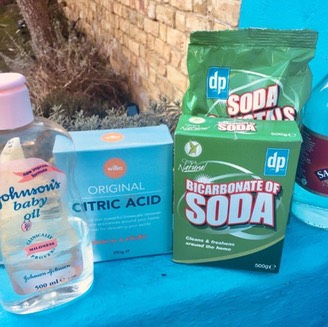
Now that the kids are back at school, I’m finding it’s a good opportunity to give the house a good clean. So what’s the difference between cleaning and tidying?
Author of ‘The life changing magic of tidying up’ Marie Kondo puts it quite well: "By tidying you’re confronting yourself. By cleaning, you’re confronting nature."
Personally, I hate cleaning so I try to make it as easy as possible by aiming to keep surfaces as clear as I can (I know, not always possible in a shared family home but a good goal!).
It’s always a good idea to tidy before you clean and if you also manage to declutter some items there’s less to clean!
I also keep the products I use simple and minimise spraying stuff around – especially important with little ones.
Before you start it’s worth getting out all your cleaning kit and assessing what you have including throwing away anything that’s out of date or that you no longer use. This will prevent you from duplicate buying, which will save money plus enable you to use up the half empty bottles first. I’ve visited houses which have lots of half empty bottles – they take up a lot of space!
Keep all your cleaning products and cloths together in one place (and out of little people’s reach). If you have a container for them to keep them all together, even better. I file fold my cloths and store them vertically so I can see what I have at a glance but that may be a step too far for some...
I know everyone has their favourite cleaning products but this is my cheap as chips eco cleaning kit:
Soda crystals - deodorise washing machine, remove burnt on food from pans, clean sinks and drains
White vinegar – clean washing machine drawers and door seal, glass, windows and shower head
Bicarbonate of soda – clean fridge, carpet, mattress and wooden chopping boards
Citric acid – uncloud glasses, descale kettle and toilet bowl
Baby oil – clean stainless steel fridge and cooker hob
Of course, now with the pandemic to think about, I’ve added an antibacterial disinfectant to the list so I can go over frequently touched hot spots after they’ve been cleaned.
If you’re looking to instigate a good cleaning routine there are some brilliant websites, some which include printable lists – my favourites are http://flylady.net/ and https://www.theorganisedmum.blog/
10 organising strategies
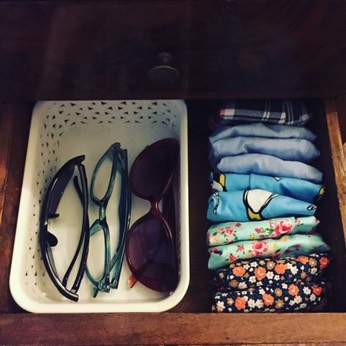
We’re going through an extraordinary time at the moment and we've had to adapt, swivel and pivot. I thought I’d share with you 10 organising strategies I’ve adopted during the pandemic, some of which you may be doing yourself...
1) Keep a container for shoes near the front door. Pre-covid I made everyone put there outdoor shoes away in their room (apart from walking boots and wellies which I allocated downstairs storage for) but now it makes sense not to bring footwear through the house so I’ve got a basket near the door to keep them together. If you don’t have a basket, a sturdy cardboard box works well especially if you cut down the sides.
2) Keep masks handy. I keep everyone’s masks in a drawer in the hallway so they’re easy to grab on the way out. It doesn’t really matter where you store them but keeping them in a designated place that all the family members are aware saves time.
3) Covid emergency box. At the beginning of the pandemic I put together some supplies in a labelled shoe box so I had it ready if a family member had to isolate: sanitizer, gloves, cleaning wipes, paracetamol and thermometer.
4) Keep food supplies in order. Go through food to make sure it’s in date and put the oldest items in front so they get used first. Store everything so it’s visible then you’ll know when you’re running low. With everyone suddenly at home for three meals a day I found meal-planning was more important.
5) Cleaning supplies. As with food supplies, keeping these where you can easily see what you have will let you know when you’re running out and stop you from over-buying.
6) Simplify wardrobe. I Learned which are my “go to” items of clothing – the ones I really love wearing.
7) Being more conscious in my buying habits.
8) I’ve been delegating more tidying tasks – it’s all good learning.
9) Keep the garden clutter free so you can throw everyone out there.
10) Finally, I’ve carved out a reading corner in my living room – it’s my own space where I can escape/hide from my family… it’s a life saver!
Children’s Artwork

With schools going back soon, one question I’m asked repeatedly by Local Mums is “what do I do with my children’s artwork pile?”
Yes, it can certainly add up. If you think how much they bring home in a week, then in a term and then multiply by each child. Before you know it you’re drowning in art, lovely though it is!
You need a strategy. So here are some of my favourite tips – you can try some of your own
As with everything else you need to first sort then store.
Sorting
- The end of each nursery/school term is the perfect time for a sort out
- Select one or two showcase pieces to display (framed on home gallery wall, magnetic clear pouches on fridge,string and clothes pegs)
- Spread all the work out and pick the best out of similar items
- Limit yourself to keeping no more than 10 pieces per child per term (or come up with a feasible number yourself- less is best) At this point you can also see if there are any pieces that can be mailed to Grandparents.
- If your child is old enough they can help you with the process
Storing
- If you’re ok about not keeping a physical copy there are still ways of preserving the memory for eg, photo and keep on the cloud or on a memory stick or disc. There are a few good apps around that enable you to sort and store, my favourites are Keepy www.keepy.me and Artkive https://www.artkiveapp.com/
- Curate photos into photobooks by child/school year or have them made into professional books or a photo collage. Snapfish and Bonusprint can do these or if you want to splash some cash www.doodlenest.co.uk can make a lovely coffee table book.
For physical copies, use storage boxes or folders and store by name and year; lots of fun ways you can do this:
- Suspension file boxes from the Really Useful Company – use their dividers to separate into school years. One box per child.
- Artists portfolios (The Works had some reasonably priced ones, the last time I looked)
- Ring binders (use plastic inserts for artwork with loose bits)
- Storage boxes with either your child’s photo, their name or their own decoration on the front
- extra large Manilla envelopes
- tubes (though not my favourite as these are harder to access)
Don’t forget, the less you have, the more you’ll be able to appreciate them later – revisiting fond memories rather than wading through. Think about why your storing them, is it for yourself or for your children? (When I was clearing out my parent’s garage a few years back I came across a big folder of artwork I’d made in primary school. It gave me a nostalgic glow looking back at it but it was momentary and certainly not worth storing all those years).
Whatever you do, have fun!
Handbag organisation
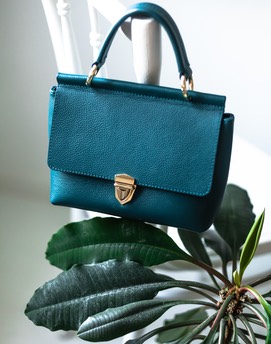
Now that we’re venturing out of our homes and back into the shops it’s time to dust down our handbags - most of us have one bag that we tend to use all the time, the one that’s the perfect size for our needs with the right strap length. This is the one we’re going to deal with – if you use multiple bags, or have a designer bag you may want to invest in a handbag liner insert – there are many available on ebay to fit all sized bags.
So here are some tips for a good handbag clear out:
First, ring fence half an hour of 'me’ time. Then
- Empty the contents of your bag onto a table or the floor (you can put some newspaper down first)
- Give your bag a wipe inside with a damp but not wet cloth
- Now, scan everything and select only the items that you use daily – these are the only items that will have the honour of a place in your bag. Put them aside.
- Next, sort through everything else – can anything be thrown away ? Does anything belong in another place? (the other two lip balms for example)]
- Don’t forget to go through your purse/wallet and remove old receipts, out of date vouchers etc. Can any store cards be ditched/replaced with an app?
There may be some items pre covid that no longer serve a purpose.
- Once that’s dealt with you should just have left in front of you the items to return to your bag
- Categorise these and put like items together and store in smaller clear zip bags or pouches for example, hand sanitizer gel and face mask
- Store items and pouches vertically where possible – this way they are more visible and accessible
- Look for micro storage solutions, for eg, If you wear glasses, your headphones can be stored in your glasses case
How satisfying was that?!
Storage boxes – boxing clever
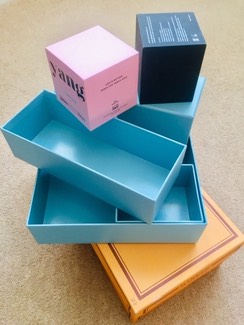
Marie Kondo once said “storage experts are hoarders.” While it wouldn’t be fair to say that everyone who has a collection of ‘storage solutions’ has a hoarding disorder it’s a good idea to consider what you’re storing away, why you’re storing it and how accessible it is.
Tempting as it may be, buying lots of storage boxes won’t instantly transform your home into a beautifully organised sanctuary of calm any more than new fitness gear won’t transform you into an athlete.
Before I visit local mums' homes or book a Zoom session with them they invariably ask me “What storage do I need to buy before I start?” The answer is always nothing, the reason being...
- You don’t know what storage you need until you finish discarding (you will have less stuff and more space).
- Usually will already have lots of storage solutions in your home
I always suggest reusing and repurposing storage that you have, it costs nothing and is a greener solution. Here are some of my favourites:
Shoe boxes – for bras, small tops, scarves
Iphone cases – for stationary , electronic accessories
Small Ferrero Rocher plastic boxes (the perfect excuse!) – to separate little things in your kitchen junk drawer or as a bathroom drawer separator.
Old Tupperware boxes with missing lids – kitchen and bathroom storage
Cereal boxes cut down – separate packets in kitchen, DIY magazine rack for paper storage
You can be really creative with this if you want.
When everything is sorted, discarded and you know exactly what you have left and the amount of space available you can then buy some lovely storage boxes. With temporary storage in place you can afford to take your time and wait until you find something you really love and will be a good fit with your home décor.
Cosmetics drawer overhaul
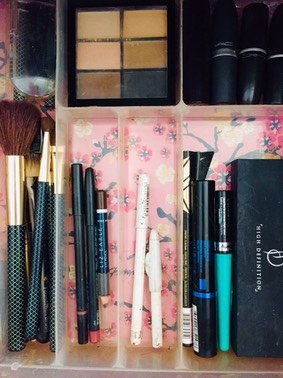
I don’t know about you but I’ve been fairly bare-faced during lockdown, apart from a bit of lippy where Zoom meetings require. Now we’re out and about a bit more it’s a perfect time to take a look at our cosmetic drawers and bags and take stock of what you have. Think of all the time you’ll save by not having to root around for your lipstick!
First of all remove everything from your drawer or bag and lay the contents out where you have space on a sheet of newspaper and put similar products together. If there’s anything that isn’t in the cosmetic category put it to one side (hair bands, face creams etc). Today you’re just dealing with your colour cosmetics...
Pick out your favourites, your go-tos, the make up you use every day. If they’re still in good condition and in date you can put aside to keep.
Next, go though everything else, looking at each item:
- Do you use it?
- Have you ever used it?
- Does it merit space if you only use it once a year?
- Has it expired? This is really important as like food cosmetics harbour bacteria. Sometimes you can see this when foundation separates or changes smell but sometimes it’s not so obvious. The average expirary date for foundation, powder, and other facial makeup is 12 months.
Some cosmetics have a little sticker (open jar icon) to say how long the product will last once opened but as a rule you should replace your mascara about every three months, eyeliner and eye shadow every six to 12 months and lipstick every 18 months.
Where possible, when you buy cosmetics you can put a sticker on it with the expiry date to remind you.
Once you’ve chosen your ‘keeps’
- Sharpen pencils
- Clean brushes
- Wash bag/or drawer
If you have a drawer put all the same things together – you can either separate with small boxes (packaging from phones, perfume, food boxes cut down to size) or I like to use a cutlery tray to separate my cosmetics in a drawer (mine came from Really Useful Products). As my tray is transparent I lined the drawer with some gift wrap that I fell in love with – it makes me smile every time I open the drawer.
Might just be me but I find there is something really satisfying about a well-organised cosmetics drawer! How about you Local Mums?
What to do with your declutterings ….
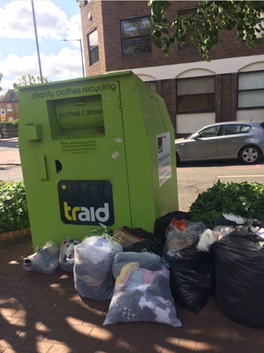
With more time spent at home we’re all becoming more aware
of our immediate environment and some have decided it’s time for a good clear
out. Only one small problem, what to do with all those items that no longer
‘spark joy’ while the charity shops are closed?
When I do a house declutter I always tell my
clients that they need a solid exit plan for these items otherwise they do have
an uncanny knack of making their way back into your life! I’m hoping the charity shops will be open
soon to take donations but until then you may want to consider the following;
- If you’re lucky enough to have a loft, cellar or eves storage you can temporarily store your donations there - but box them and tape them up!
- Some recycling centres are now open to take recyclables but not re-usables (check ahead on website, Wandsworth for eg, is operating different opening days depending if your car has an odd/even reg no.)
- The YoungPlanet app lets you list your items for free, save things from landfill and do your bit to save the planet by passing on used kids items
- If you have jewellery to donate, the alzheimers society https://www.alzheimers.org.uk/get-involved/make-donation/recycling will send you a jiffy back to pop items into
- If you have vintage items (toys, silverware, watches) vintage cash cow https://www.vintagecashcow.co.uk/ will collect from you
- Designer clothes? You can sell them with a consignment company like Cudoni https://www.cudoni.com/or HEWI https://www.hardlyeverwornit.com/
- Other clothes? Try https://www.preloved.co.uk/ or the depop app if you have a teen in the house
- Well loved teddy bears? Send to https://www.lovedbefore.london/ where they will be lovingly restored for adoption
- Use local websites like Facebook Marketplace
- Ziffit https://www.ziffit.com/en-gb/ are good for books – you can have fun scanning the barcodes too.
- Certainly around my neighbourhood, I’ve seen lots of books and childrens toys put in the front porch with a ‘Help yourself’ sign
This is not an exhaustive list but will give you some ideas
until the charity shops open their doors to donations (hopefully soon).
Happy decluttering local mums!
Tips for organising your home office
Do any other local mums feel like you’re busier than ever since lockdown? Never mind making time to learn a language or
a new craft, sometimes it seems like we’re fighting a losing battle juggling
between home schooling, home working, preparing up to three meals a day and having no
time to ourselves at all…
I’m a professional organiser and even in my household things can get a bit busy but I’ve got some great tools to help escape the overwhelm but for now, I’m going to keep the focus on those of us working from home. Whether you’ve suddenly found yourself WFH or you’ve always remote worked but now with a full house it’s more of a struggle here are a few tips to get local mums started.
· Visualise your day – how much time can you allocate to work? What would you like to have more time for, spend less time on? When are you most productive? How would you like your office space to look? How will you be using it e.g., if you’re making lots of zoom calls, you’ll need somewhere relatively quiet with a good light source).
· Set up your workspace. Not everyone has the luxury of a ‘home office’ but have a look around and see where you can carve yourself out a little space. Some of you may have read about Sarah Ward, the mum from Cheshire who transformed her airing cupboard into an office for £6 – and I’m not suggesting everyone try that but think about being more creative with the space that you do have. Where could you fit a desk or a shelf?
· Be clear about your working hours and make sure everyone in the house knows the times when you’ll be unavailable – stick police tape across your door if you have to!!
· If you already have a desk/office start with a tidy desk. Remove everything from it and put back only the items you need.
· It’s a good idea to store pending paperwork vertically (you can use a magazine rack) so you can see and access it more easily.
· Signal the end of your working hours by wiping down the desk.
· If the desk is used at different times by different family members, keep a box to put all the things you will need for your work (eg, laptop, charger, stationery, pending file) and make sure everything is stored in your ‘portable office’ when you have finished.
Hopefully, these few tips will help local mums get started.
About Victoria
A background in hotel management and over 15 years as an office manager/PA in the City has honed my organisational skills . However, when it came to my personal belongings I have always been naturally untidy so when I discovered a system that worked for me I knew it would work for anyone.
I've been helping local mums in their homes for the past four years to achieve the peace of mind that comes with living in a calm, uncluttered environment. In order to continue to support my clients while maintaining social distancing I'm now offering virtual sessions via Zoom

Victoria with Marie Kondo
Contact:
Victoria Nicholson
Founder
My Wardrobe Zen
Tel: 07941 375304
Email: victoria@mywardrobezen.co.uk
www.MyWardrobeZen.co.uk
